














































part in Rabobank’s Ag Pathways programme.











































Living and learning: Dairy farmer Kelly-Anne Hopper is one of over 150 young farmers from Canterbury, Otago and Southland who has benefited from
Young farmers take next career step
Twenty-nine young farmers from Canterbury, Otago and Southland have spent time sharpening their business management and planning skills at the latest edition of Rabobank’s Ag Pathways programme.
] by Kent
Caddick
The Ag Pathways programme aims to develop young farmers skills and contacts so they can advance their careers in the agricultural sector. The 2024 Ag Pathways was the seventh edition of the programme and more than 150 young farmers from across the Lower South Island have now attended Ag Pathways since the inaugural event in 2015.
The latest South Island edition of Ag Pathways was held at the Croydon Lodge in Gore and was attended by young farmers, including several farming couples, working in the industry across a range of sectors and roles.
Rabobank Lower South Island Client Council Chair Craig Whiteside said the 2024 Ag Pathways programme cohort was one of the largest groups to date.
“We had 29 attendees on the latest edition of the programme making it one of thebiggest groups we’ve ever had,”
said.


30,287 copies distributed monthly INSIDE THIS EDITION Need a lawyer? OUR LOCATIONS: SELWYN 03 348 8480 WEST COAST 03 755 8673 CBD AND RICCARTON 03 348 8480 PARRYFIELD.COM Judith Bullin, Partner, Parry Field Lawyers ▪ Agri-business ▪ Disputes ▪ Wills & Asset Planning Our team can work to support your business growth or give you peace of mind around planning, property or personal matters. Talk to us today about how we can help. Getting the right advice early makes a difference. LOCAL LEGAL SPECIALISTS TO PAGE 2
taking
SIDE filling up fast p7 Sponsor extended p16 The energy link p22 All-terrain EVs p37 June 2024 Edition
Whiteside
South Island career programme a ‘success’

WE ARE BUYING!
FROM PAGE 1
“And I think this is likely down to the positive feedback past participants of the programme have passed on to other farmers from around the region,” he said.
Next career step: Almost 30 young farmers from Canterbury and the lower South Island attended the latest Rabobank Ag Pathways programme session held in Gore.
Ag Pathways via the family’s bank manager, Rabobank’s Mark Hunter.
“Mark sent me some information on Ag Pathways and I’m really glad I signed up as it was an excellent course,” she said.






Whiteside, who owns and operates a large-scale arable farming operation in South Otago, said the programme gives participants a range of tools to help them move forward with their agricultural careers.
“The information presented was easy to follow and I learnt a lot over the day and a half, particularly about topics like financial literacy and how to start a business which I hadn’t really come across before.”
Hopper said she also appreciated the opportunity to get together with other young farmers “in the same boat” as her.
“I thoroughly enjoyed networking with the other farmers on the course,” she said.




“Across the one and a half days, the attendees heard from presenters covering a bunch of different topics including personality testing, financial skills, succession planning, people leadership and business planning,” he said.




“On top of this, the agenda also featured a ‘war stories’ segment where three local farmers came in and spoke to the group about their farming journey and how they have grown their own businesses.
“I found the programme environment very welcoming and there was plenty of useful advice that came from the discussions with other attendees.”








“This session always proves really popular as the attendees love hearing from other farmers who have encountered similar challenges to the ones they’re currently facing. Two of the farmers who spoke this year were ex-Ag Pathways participants, so it was also really valuable for attendees to hear about the ongoing benefits of attendance on the programme.”
As a follow-up to the programme, Whiteside said, attendees would get together again in June to present back to the group a business plan on what they want to achieve in the future.
“This is a really important component of the programme as it ensures the participants are immediately acting on some of the new information they’ve picked up at the course, and it also helps to further build the connection between the attendees,” he said.
Programme participant Kelly-Anne Hopper, who is the ‘2IC’ on her family’s robotic dairyfarm located in Woodlands near Invercargill, said she’d been on the look-out for personal development courses and became aware of
Hopper said the follow-up group get together scheduled for June really made attendees accountable and that she’d already decided what she would present at this session.
“I plan on covering off how I intend to grow equity so I can buy a dairy herd, as well as the steps I’m taking to develop a team of professionals to help with this,” she said.
“My participation in Ag Pathways has definitely lit a bit of a fire under me and provided me with the confidence to make some important steps towards the achievement of my goals.”
Due to the success of the South Island event, a North Island Ag Pathways was run for the first time in 2023 and a second programme is now scheduled to take place in June.
To find out more about this event, email: rabocommunity@rabobank.com.
Information for this article was supplied by Rabobank New Zealand which is a part of the global Rabobank Group, the world’s leading specialist in food and agribusiness banking. For more information go to: www.rabobank.co.nz









2 June 2024 CANTERBURY FARMING FARMING NEWS Corner Main South Road and Epsom Road, Sockburn, Christchurch Ph: 03 348 4129 or 0800 655 551 Rangiora Service Centre, 78 Ivory St, Ph: 03 313 7059 www.avoncityford.com We are currently looking to o buy good quality NZ new cars If you are thinking of selling your car please get in touch with our Buyer Forbes Gourlay | PH: 027 222 5000
Red meat volume up, value down
The Meat Industry Association says the country’s red meat sector exported products worth $10.2 billion in 2023, a drop in value of 11 percent compared to the previous year.
] by Kent Caddick
The analysis by the Meat Industry Association (MIA) shows that while export volumes increased, the value fell from the record figures for both sheepmeat and beef in 2022.
“Red meat exports are a good barometer of the state of the global economy,” MIA chief executive Sirma Karapeeva said.
“The drop was mainly due to tough economic conditions and inflationary pressures in many of our key markets. Consumers around the world still want to buy red meat but they are not paying as much for it.
“Increased supply from other exporters, including a significant increase in Australian sheepmeat exports, also had an impact. The top five markets were unchanged from 2022 but the value of New Zealand exports was mostly down, reflecting the overall trend.”
China remained the largest market, but exports fell 16 percent to $3.6 billion. However, exports to the United States rose eight percent, to $2.5 billion, largely due to increased demand for beef.
“New Zealand’s red meat sector has a diverse export market strategy, and this has helped mitigate the impact of the weakening demand and pricing in any one single market,” Karapeeva said.
“With red meat sales declining in China, companies have other options and are making sound commercial decisions.”
Karapeeva said the United Kingdom was a small but improving market.
“The NZ-UK Free Trade Agreement came into force in mid-2023, providing New Zealand with significantly improved quota access for beef. This was reflected in the volume exports to the UK growing by 83% to 2,421 tonnes, and the value growing by 93% to $27 million.
“Most of this growth was in high value chilled beef, making the UK one of New Zealand’s top markets for chilled beef in 2023, with exports of 884 tonnes worth $11.8 million”.
Sheepmeat export volumes rose by 3% to 384,239 tonnes. However, the value was down 14% to $3.7 billion.
Karapeeva said the drop largely reflected cost of living pressures in key markets but also increased competition from across the Tasman where exports increased following three years of good growing conditions and flock rebuilding.
“Australian sheepmeat exports rose by 25% overall in 2023 and by 50% to China. China’s tariff on Australian sheepmeat also dropped to zero at the beginning of 2023, meaning New Zealand no longer enjoys a tariff advantage in the market.”
China continued to be New Zealand’s largest sheepmeat market at 216,079 tonnes,
56% of total sheepmeat exports. Volumes rose by 10%, but value also fell 10% to $1.4 billion.
The US was New Zealand’s third largest market by volume at 27,567 tonnes but the second largest by value at $544 million. Volume and value fell 5% and 8% respectively.
At $18.04/kg free on board (FoB), the US was still one of New Zealand’s highest value markets.
The UK was the second largest sheepmeat market, at 30,133 tonnes, down 7% by volume and 29% by value to $291 million.
“The drop was mostly due to the effect of high inflation and food prices on consumer spending, with some impact from increased Australian supply following Australia’s Free Trade Agreement with the UK coming into force mid-year.”
The volume of beef exports increased by
7% to 511,680 tonnes but the value fell 9% to $4.4 billion, reflecting difficult economic conditions, particularly in North Asia, and high levels of exports from other global suppliers.
The MIA analysis showed there was a significant recovery of beef exports to the US.
“Drought conditions that led to high US domestic production during 2022 eased in some regions and New Zealand and Australia benefited from the increased demand with both having good quota access.”
New Zealand’s beef exports to the US grew by 46% to 181,040 tonnes and 28% by value to $1.6 billion. Volumes of exports to Canada also grew, by 77% to 18,110 million tonnes with value up 52% to $155 million.
China remained the largest market by volume at 203,509 tonnes, down 6%. However, the weak economy, high inventory levels and



‘The MIA analysis showed there was a significant recovery of beef exports to the US.
Sirma Karapeeva MIA Chief Executive

large volumes of Brazilian exports saw value drop 26% to $1.56 billion.
Exports to other major North Asian markets all declined, largely due to inflation and cost-of-living pressures. Japan was down 34% to $230 million, Taiwan 6% to $176 million and Korea 40% to $137 million.
Information for this article was supplied by The Meat Industry Association. For more information go to: www. mia.co.nz

































CANTERBURY FARMING June 2024 3 FARMING NEWS
On the rise: The volume and value of chilled beef exports to the United Kingdom has grown significantly since the implementation of the NZ-UK FTA in 2023. Photo by www.taibafarms.co.nz







] with Todd McClay
]
Minister for Agriculture
Getting Wellington out of farming
We are six months in, and our Coalition Government is already starting to turn the ship around.
Just around the corner is this year’s Budget, which as you’ll see, will continue our progress to get New Zealand back on track.
We will prioritise investments in the public services that matter most to you, delivering personal income tax reductions for hard working Kiwis, and delivering durable savings – to support investments today and to get the Government books back into balance.
In the agricultural space, the Government has prioritised work to minimise the administrative burden on farmers caused by duplication, red tape, and regulatory blocks on things such as irrigation, water storage, flood protection schemes and stock exclusion rules.
We all know that Labour launched a wave of red tape at farmers – more than 20 changes to legislation and regulation, or new rules, were introduced since 2017.
Labour used climate change rules to threaten 20 per cent of sheep and beef farms with closure by 2030 – this is unacceptable and impractical in a competitive marketplace that would see this production resumed by less efficient producers overseas.
For most of the last six years, farmers have been constantly on edge, wondering just what Wellington will throw at them next.
The focus for this Government is to back farmers to get more value back to the farm gate, more money into famers pockets, so
that farmers can continue to adapt, evolve, and innovate within their businesses for the long term.
We have listened to the concerns from our rural and farming communities, and we are pushing hard to unwind the unworkable and impractical policies of the last government.
We are replacing the National Policy Statement for Freshwater Management 2020, committed to changing the hierarchy of obligations for Te Mana o te Wai, and committed to delivering a better RMA system for our primary sector and rural communities.
We campaigned and have now committed to reversing the onerous rules around winter grazing and stock exclusion changes to save our farmers money – and countless hours of paperwork.
For stock exclusion, we’re proposing to remove the problematic and contentious low slope map and for regional councils and farmers to determine where stock need to be excluded, based on risk.
Regional councils also tell us there have been significant improvements in winter grazing practices, with farmers changing where they plant fodder crops and how they manage winter grazing.
The national requirement for farmers to obtain prescriptive and expensive winter grazing consents is being removed in time for the 2025 season, and instead being managed
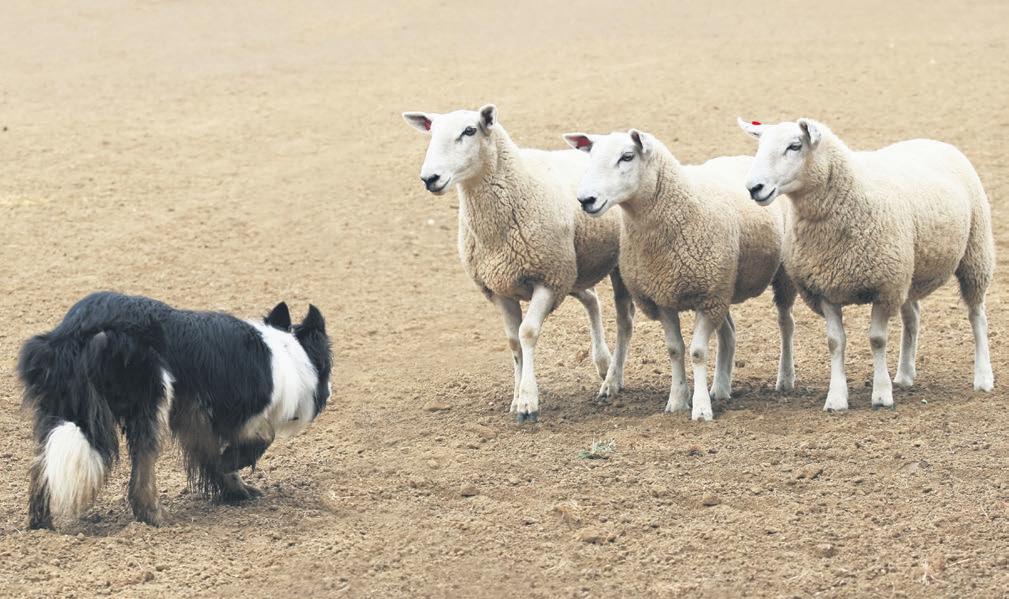
through good practice and regional council plans. Winter grazing rules would have required over 10,000 farmers around the country to get a resource consent just to feed a winter crop to their stock.
We have also announced that an independent panel of experts will review agricultural biogenic methane science and targets. The independent review which will report back to the Government by the end of the year, will provide evidence-based advice on what our domestic 2050 methane target should be, consistent with the principle of no additional warming.
New Zealand farmers are the world’s most carbon-efficient producers of high-quality food and fibre, and it is in no one’s interest to see this production filled by other countries with higher emissions profiles.
‘For most of the last six years, farmers have been constantly on edge, wondering just what Wellington will throw at them next.

This is just the start of our plan to back the Primary Sector. The Government will continue to get Wellington out of farming and allow you to get back to doing what you do better than the rest of the world.







Keeping up with technology
I admit that technology still scares the living daylights out of me. Passwords and renewing this and that and the overall panic I go through when dealing with day-to-day computer stuff, but I am proud of the fact that I have got the basics covered.
] with Rob Cope-Williams
Having come through the later parts of last century as either a hands-on person, and witness to what unfolded during that time I am now numb when I think of what the farming industry is doing with their cell phone technology.
This comes about as we went through the calf sales and then flowed through into the bull sale season.
Online seems to have totally taken over. Commercial breeders are getting the performance records they want, digesting them, and buying the animals they want to better their herds.
I assume for many the first time they see the animal is when it is unloaded into their yards. I do hasten to add that a top line livestock agent is vital for the buyers.
I see that a couple in South Canterbury now fence in herds with virtual fences rather than shifting 20 breaks a day.
Set up on a computer they can literally keep cattle in an area and shift them onto fresh areas at will using their mobile phone.
The system is controlled by the cattle wearing collars that keep them within the bounds, but also monitors the health of the animal.
I was astounded when, years ago people could turn centre pivots off and on from their cell phones, now they can assess what areas need more water than others.
Combines that slow down for thick crops and speed up again for lighter areas in any one paddock are old hat now days.
Vineyards now have robots that travel along the rows and show early signs of disease outbreaks.
Fertility maps on a computer can advise what to add and when, and goodness knows what else is being used or is being developed.
As my head spins at the rate modern farmers are taking on the new technology, I do wonder about how they extract the sheep manure from under the grating, manually drench sheep and cattle, and those mundane things I was told to do as a son of a farmer.
I think I worked on farms at a very simple time and I like it that way.

4 June 2024 CANTERBURY FARMING FARMING NEWS
RWNZ creates new role to develop next generation of rural leaders
] by Kent Caddick
Applications for the newly created position close on May 10 with the successful candidate expected to be announced in mid-June, ahead of starting on the board at the beginning of July.
“As we near the centenary of Rural Women NZ, it’s important that we not only look back and acknowledge how far we have come over the past 100 years, but also that we look to the future,” RWNZ President Gill Naylor said.
“Creating this Associate Board Member role is a way for us to foster emerging leaders and support the movement for more women on Boards generally,” she said.
“As an organisation, it also supports our succession planning and helps us achieve a broader balance of skills and diversity.
“I like to think of the position as a ‘step up’ role aimed at candidates who do not have Board-level experience but could succeed in leadership and governance roles if given the
opportunity to prove themselves.”
The Associate Board Member role is appointed, not elected by RWNZ members, and does not hold voting rights. However, the successful candidate will play a full role in Board and Committee meetings, helping to shape strategic planning and decision-making for the organisation.
“We’ve made some great inroads into nurturing the next generation of leaders through our various scholarships and bursaries, annual business awards and activator programme over the years. This Associate Board Member role is a way we can continue to evolve as an organisation,” Naylor said.
The successful candidate will be appointed for a one-year term. While the role is not remunerated, they will be reimbursed for outof-pocket expenses.
More information on the role responsibilities, personal attributes, time commitments and desired knowledge and experience is available on the Rural Women nZ website: www.ruralwomennz.nz
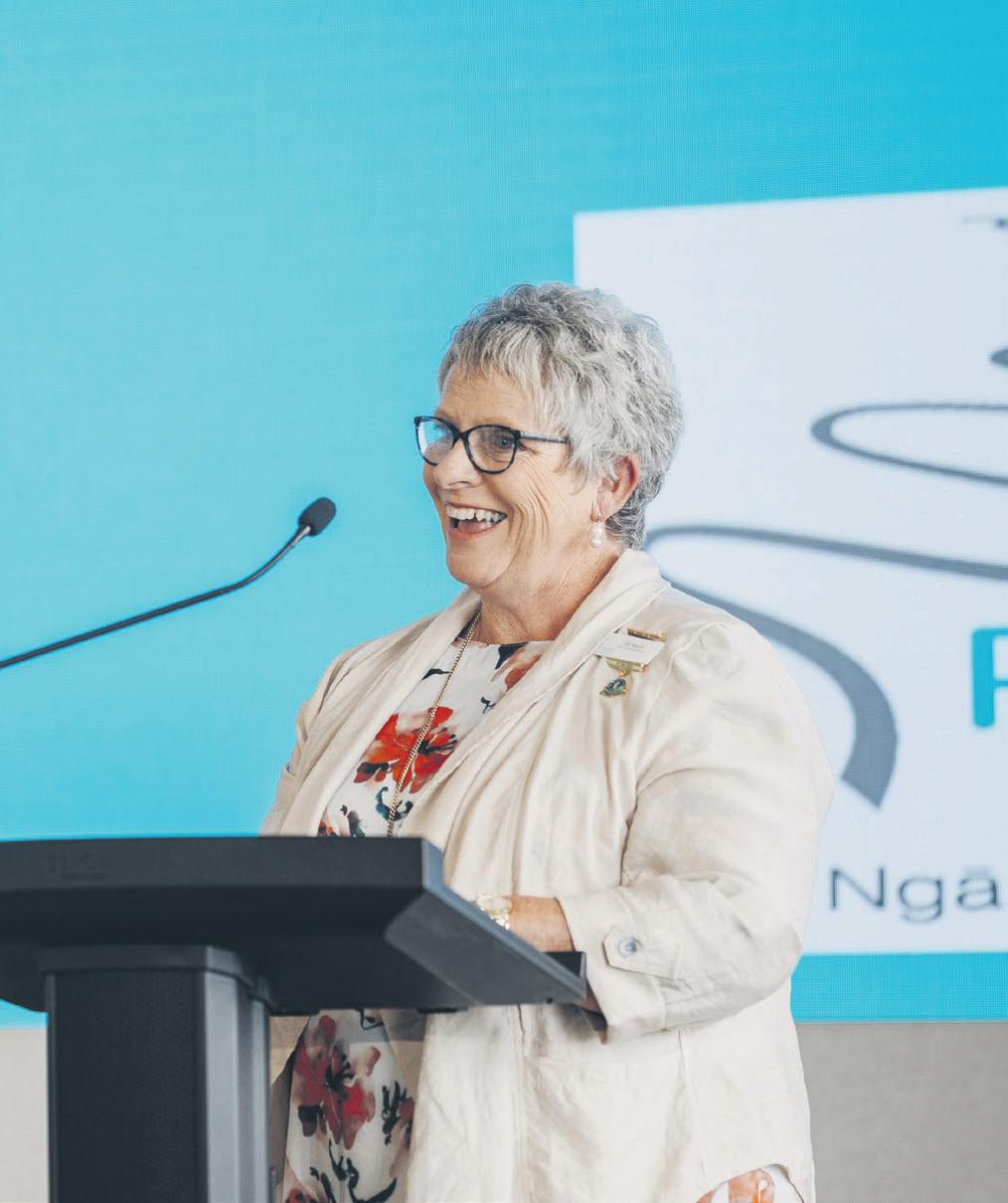






CANTERBURY FARMING June 2024 5 FARMING NEWS
Rural Women New Zealand has created a new Associate Board Member role to help develop the next generation of rural leaders. Apply now: Rural Women New Zealand President Gill Naylor says the creation of an appointed Associate Board Member helps them to foster emerging leaders. Thank you to our farmers and growers for helping raise $34,237 in the Canterbury region! The Cash for Communities programme offers an easy way for farmers, growers and contractors to give back to causes close to their hearts, with qualifying fertiliser and agrichemical purchases during spring. The next programme starts 1 September 2024. Proudly supported by cashforcommunities.co.nz Find out more






] with Jo Luxton



Private profit over nature
The National Government is sacrificing nature and granting itself unprecedented power, all in the name of private profit. What’s more, it doesn’t want any Kiwis, including those here in Canterbury, to have any say about any of it.
] Labour spokesperson for Agriculture
Currently, large-scale projects like coal mines are subject to environmental protection laws and must be given the go-ahead by an independent group of experts.
National’s proposed Fast Track Approvals Bill will remove that power from the experts and hand it to its own Ministers, giving three men the final say on the fate of some of our most treasured natural assets.
And by all indications so far, these men will give the green light to companies looking to trample our ecosystems and plunder our resources.
One of these three men is New Zealand First MP Shane Jones, who has made no se-
cret of his desire to put commercial interests ahead of our flora and fauna.
He has made it clear he wants mining back in a big way, whatever the cost to our environment, climate goals, and future generations.
Among the companies invited to apply for fast tracking are some that made campaign donations to National, ACT, and New Zealand First. Ministers shouldn’t be taking donations from businesses with one hand and making decisions about their projects on the other.
As if this isn’t outrageous enough, National could remove the voice of the people from the entire fast track process.
Should its bill pass, Kiwis could be kept in the dark and have no say on landscape-alter-
ing projects happening in our own backyards. This is an attack on democracy itself.
The Fast Track Approvals Bill could also allow National to give the green light to projects prohibited under current plans, as well as projects already rejected by courts.
National MPs are already taking meetings with large-scale polluters – including oil, gas, and mining companies – and have invited applications from more than 200 companies.
Unsurprisingly, the Fast Track Approvals Bill is hugely unpopular. Submissions from the public have been overwhelmingly against it. Seven of our eight regional councils have opposed it. The Auditor-General has formally expressed his concern.
Even former National minister Simon Upton, now Parliamentary Commissioner for the
Environment, has warned of “significant environmental risks”. The Bill is a disaster on an industrial scale, and National is hellbent on making it happen.
Fast track consenting can work well, if implemented correctly. Labour’s fast track consenting scheme approved projects for residential and commercial building, renewable energy, and infrastructure.
The difference is we gave a great deal of consideration to how those projects could work with nature rather than against it, and all approvals were made by independent panels.
By contrast, National’s Fast Track Approvals Bill is an assault on nature, transparency, and democracy, all in the name of private profit.





] with Steve Abel
] Green Party Spokesperson
] for Agriculture


We’d be fools not to back wool
In my wardrobe is a favourite green woollen cardigan. It’s around 60 years’ old and, aside from a wear hole in the elbow, looks nearly new.
It’s hard to not marvel at what an incredible fibre wool is and to note that this article of clothing was grown, processed, designed, and finely manufactured entirely in New Zealand.
We need to actively back wool in New Zealand. Its potential is huge. Recently at the Primary Production Select Committee, as part of an ongoing briefing from the industry, we had powerful presentations from wool shearers, producers, processors, and manufacturers who are doing amazing work and innovating exciting products to bring the industry to greater prosperity.
During my time at Greenpeace, I was part of the successful campaign to ban plastic bags. Disposable plastics are an obvious environmental scourge choking our oceans with micro plastics that make their way in-


to sea life and ultimately the food on our dinner plates. The domination of synthetic fibres and non-biodegradable substances in all parts of clothing, building, and manufacturing is a slow-moving environmental catastrophe.
Plastics and synthetics are a byproduct of the oil industry and rely on a soup of toxic chemicals and polluting processes to create. When they are worn out, they break down into noxious and sometimes highly persistent substances which are toxic to humans and other biological life.
Natural fibres, on the other hand, have extraordinary characteristics, many of which synthetics strive to replicate. When they are worn-out they biodegrade into benign forms.
Wool has inherent insulative, flame retardant, and odour-resistant qualities. It has extraordinary moisture and temperature management attributes that make it an all-climate fibre. The Bedouins of the sweltering Sahara



and the Vikings of freezing Norway traditionally wore wool. It has been used by humans for at least 12 thousand years, so why is the industry not booming?
New Zealand has a proud wool producing history, so for many of us it is shocking when we hear of shorn wool being dumped because it has been deemed to have low market worth.
One brutal truth is that wool is being beaten out by synthetic plastic. Since the invention of Nylon by Dupont chemicals in the 1930s, a multitude of synthetic fibres have steadily come to market and forced out linen, cotton, hemp, leather, and wool from near universal usage.
Whereas my childhood school uniform was made of only two substances, cotton and wool, every single component of my son’s school uniform is dominated by polyester. From socks to hoodie, no thread of wool is used in his uniform. Likewise, the






carpets and tiles of most schools are plastic. My Green colleague Teanau Tuiono cried foul last year over the failure of New Zealand schools to use locally grown wool for their floor coverings.
Some free-market purists might say ‘tough luck,’ but if we alone consider the environmental consequences of plastic domination, we know that isn’t a satisfactory attitude.
New Zealand is the world’s third largest producer of wool and provides 40% of the global Merino supply, yet we sell most of it as bailed fibre into the global commodity market without adding local manufacturing value. To be frank, this is foolish. WiseWool made it very clear that we must support local manufacturing if wool is to thrive again.
The Government needs to put its money where its mouth is. We would be fools to not back New Zealand wool. Not only for the sake of our local producers, but for the good of the planet.






6 June 2024 CANTERBURY FARMING FARMING NEWS
Registrations filling up fast
the South Island Dairy Event (SIDE), New Zealand’s largest dairy conference.
] by Kent Caddick
This year’s event will be held from June 24 to June 26 at Lincoln University and the Ashley Dene Research Farm in Lincoln.
The event, established in 1998, provides South Island farmers with a platform to enhance their knowledge and skills crucial to their businesses.
An extra session has been added this year, featuring SIDE Breakfast with Cameron Bagrie. Bagrie, New Zealand’s leading independent economist, will offer his expertise on the issues and opportunities facing the dairy sector.
Event Chair Jonathon Hoets said attendees will have the opportunity to engage with Bagrie in an intimate setting, gaining valuable insights and asking questions directly.
Hoets said he is excited about the upcoming conference.
“This is an invaluable opportunity for our attendees to gain insight into navigating uncertain times within the dairy sector,” he said.
“We are dedicated to empowering individuals within the industry through education and networking opportunities.”
In addition to Breakfast with Cameron Bagrie, SIDE offers a Research Farm Field Trip, three high profile keynote speakers, 12 workshops with Q&A sessions, a celebration dinner marking SIDE’s 25th anniversary milestone, and the BrightSIDE programme for dairying future decision makers.

“The South Island Dairy Event has been empowering people in the South Island dairy sector for over two decades by providing valuable insights on how to adapt and manage change within their businesses.”
BrightSIDE is also back and this year participants will kick off their day by joining the main SIDE event at Lincoln University in the morning before heading to Ashley Dene, one

Ronald W. Angland & Son LAWYERS
Lincoln University’s research farms.
Here they will rotate through various workshops focusing on different aspects of farming, such as hoof trimming, pasture management, and calving and reproduction.
Hoets said BrightSIDE aims to inspire and attract dairying’s future decision makers to the South Island














Growing the knowledge:
The South Island Dairy event provides South Island farmers with a platform to enhance their knowledge and skills crucial to their businesses.
and
To register go to www.side.org.nz
and











CANTERBURY FARMING June 2024 7 Property | Family | Wills Trusts | Estates | EPAs | Rural Business | Traffic | Employment Leeston (03) 324 3033 Email: lawyers@anglands.co.nz | www.anglands.co.nz Solicitors of Selwyn since 1965
of
Dairy Event, provide them with skills, tools
knowledge to succeed
thrive in a dynamic industry.
up
Registrations are quickly filling
for
Golden Bay Dolomite NZ’s most loved magnesium. call 0800 436 566 or visit www.dolomite.co.nz FARMING NEWS





 ] with Bessie Paterson LLB
] Ronald W Angland & Son
] with Bessie Paterson LLB
] Ronald W Angland & Son


Intestacy rules and applications
Many people believe that if they die without leaving a valid Will, their spouse or partner will inherit the whole of their estate.
That is so in limited circumstances and set out below are the scenarios which arise when someone dies without leaving a valid Will o r a Will which could be validated by the High Court.
Where a deceased person has a surviving spouse or partner, but has NO parents, children or grandchildren, the surviving spouse inherits the whole of the residue of the estate.
If the deceased person has no spouse or partner, but has a child or children, the residue is divided equally among the children. An only child will inherit the whole of the residue.
The above paragraph sets out what many people wish to happen, but the ensuing paragraphs raise many issues which most of us would prefer to avoid.
If a deceased person has a spouse or partner and children, the spouse or partner receives all of the family chattels, $155,000.00 and one third of the remaining residue (if any). The children receive the remaining two thirds of the residue.
Where a spouse or partner and parents
survive but the deceased has no children, the spouse or partner receives the family chattels, $155,000.00 plus two thirds or any remaining residue and the parents receive a one third share of the remaining residue.
If there is no surviving spouse, and no children but the deceased’s parents survive, the parents inherit the estate.
If there is no spouse or partner, no parents or children surviving, the deceased person’s brothers and sisters inherit the residue equally, but if any of them have died, their children inherit their deceased’s parent’s share.
The remaining categories of people who may inherit in an intestacy are surviving grandparents or uncles/aunts.
When this scenario arises half of the estate goes to the family of the deceased’s mother and the other half goes to the deceased’s father’s family.
If there are no surviving relatives, the residue of the estate goes to the State and anyone who may have expected to have been included in the deceased’s Will may apply to

the Government for a pay-out, but I would not hold your breath on getting any pay-out from that source.
The above rules are included in the Administration Act which imposes an obligation on the estate’s administrator to distribute the residue of the estate in ac-

cordance with the above paragraphs. Making a Will is essential to avoid any of those scenarios arising.
article has been prepared










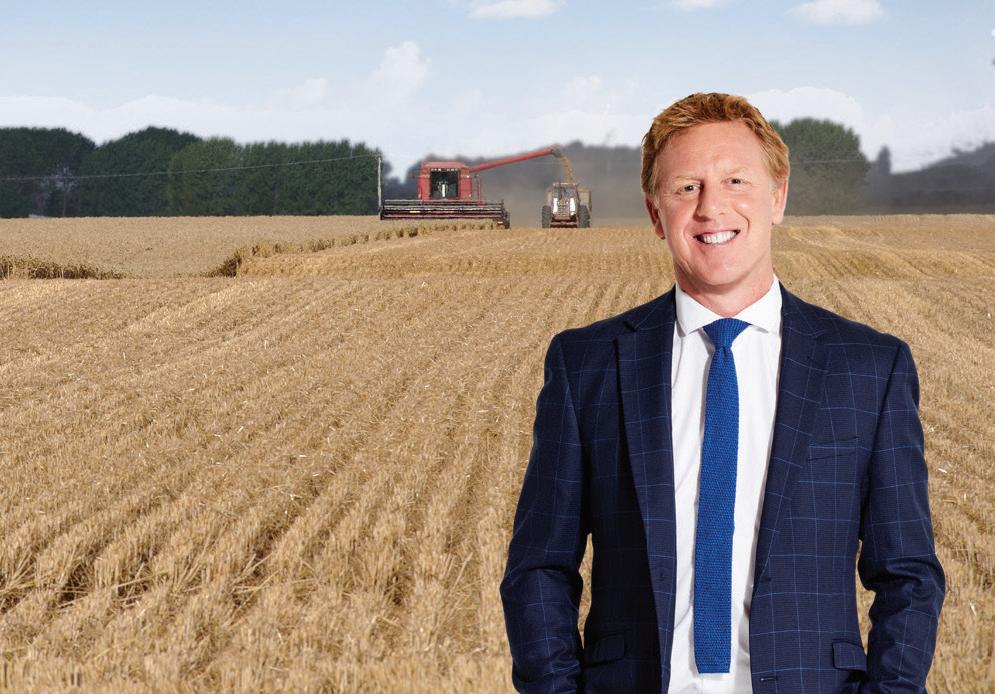
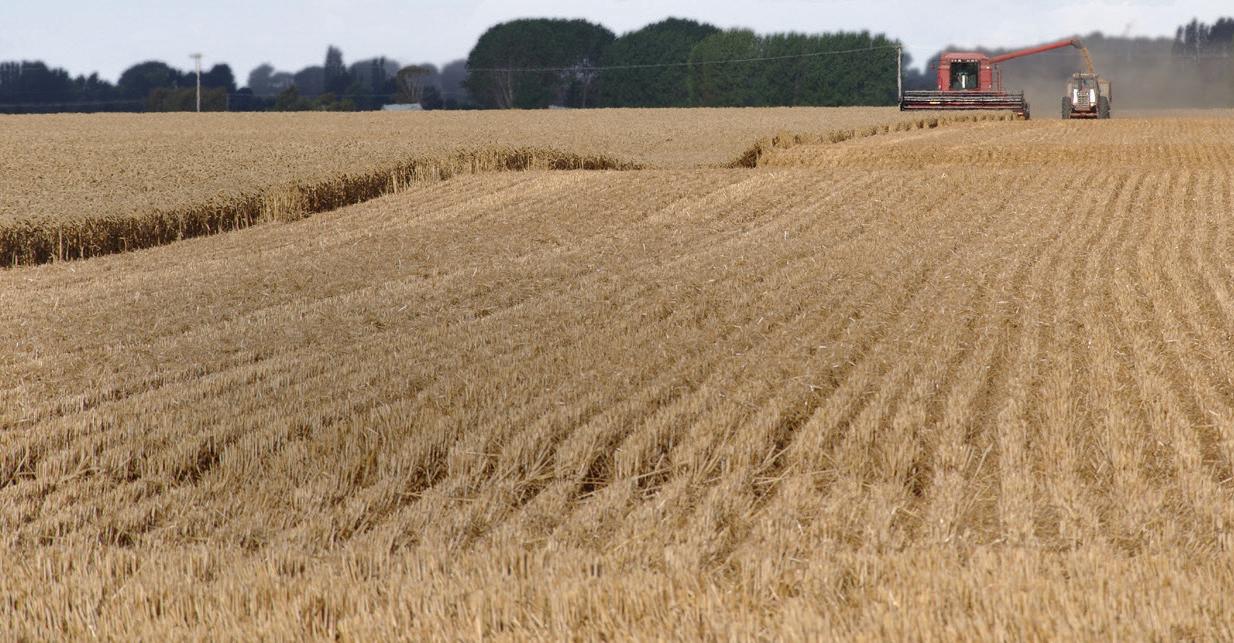



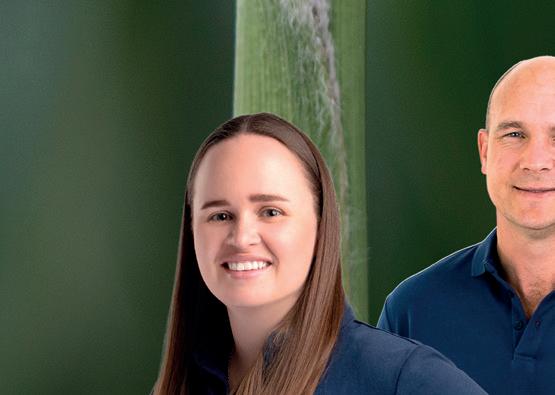






8 June 2024 CANTERBURY FARMING RURAL PROFESSIONALS 9 Good Street, Rangiora 03 311 8008 www.helmores.nz email@helmores.nz PROFESSIONAL RURAL REAL ESTATE ADVICE Residential / Commercial / Rural / Lifestyle Ben Turner 027 530 1400 03 375 4736 ben.turner@bayleys.co.nz WHALAN & PARTNERS LTD, BAYLEYS, LICENSED UNDER THE REA ACT 2008 Call Ben today for an altogether better approach to your rural real estate needs along with an up-to-date market overview.
This
by Bessie Paterson a partner at Ronald W Angland & Son, Lawyers, 2 Chapman Street, Leeston.








Solid 2024 to date for global markets

From the start of 2024 up until the start of April global equity markets generally had a good run. Positive sentiment was supported by decent earnings results, a strong US economy, and some green shoots for the global economic outlook.
] with Andrew Wyllie
] Forsyth Barr
In April, a few market jitters kicked in due to rising geopolitical risks (driven by rising tensions between Israel and Iran), concerns over higher inflation, and more elevated interest rates.
Some of these concerns have subsided and market performance has been helped by robust first quarter earnings results from US companies. Equity market gains have broadened across a range of countries over the past six months, with European and UK markets playing catch-up with the US.
Closer to home, however, performance in Australasian markets has been softer with both markets only managing to eke out marginal gains through the quarter.
Interest rates – higher for longer?
At the start of the year financial markets were pricing most major central banks to be cutting interest rates around now. However, the reality of more persistent inflation in the US, Australia, and New Zealand has scuppered those expectations.
In the US, headline inflation fell back toward 3% around the middle of 2023,
but ever since has been hovering closer to 3.5% and is taking longer to get back toward the US Federal Reserve’s 2% target.
Financial markets are now pricing only one rate cut from the US Federal Reserve by the end of this year — down from the approximate six cuts priced in at the start of the year. This has put upwards pressure on medium and longerterm interest rates both in the US and in New Zealand.
New Zealand economy struggling, but inflation still elevated
The New Zealand economy was softer than expected, shrinking 0.1% over the December 2023 quarter and falling 0.3% year-on-year, a very weak performance.
Our economy has been largely propped up by very strong levels of population growth. Adjusting for population gains, the economy has been contracting on a per capita basis since the end of 2022.
Most analysts expect to see interest rate cuts from the Reserve Bank of New Zealand (RBNZ) toward the end of 2024/early 2025. This could provide some support for those with borrowings as the cost of debt starts to fall.
But on the flip side, for those with term deposits, lower interest rates could reduce the level of returns for money sitting in the bank.
Playing the long game
So far 2024 has been reasonably kind to investors, but that’s not to say it will be all plain sailing from here. Minor pullbacks or breathers in market momentum (as we saw in April) are normal, as in fact are larger downturns. What matters most is staying focussed on the long game.
This article was prepared as at 30 April 2024 and provides market commentary for the three-month period ending on that date.
To discuss your investment options please contact Andrew Wyllie, who is an Investment Adviser and is Forsyth Barr’s Christchurch Branch Manager. He can be contacted regarding portfolio management, fixed interest, or share investments on 0800 367 227 or andrew.wyllie@forsythbarr.co.nz.
This column is general in nature, has been prepared in good faith based on information obtained from sources believed to be reliable and accurate, and should not be regarded as financial advice.





CANTERBURY FARMING June 2024 9 RURAL PROFESSIONALS hello@survus.co.nz www.survus.co.nz 0508 787 887 We are your local surveying and subdivision experts. Your Land. Our Field. Contact us. We have a strict ‘there’s no such thing as a bad questions’ policy. Looking at off-farm investments? When you are thinking about your investment options, talk to Forsyth Barr To get personalised investment advice and portfolio management specific to your investing needs, talk to Investment Adviser Andrew Wyllie in confidence on (03) 365 4244 or email andrew.wyllie@forsythbarr.co.nz CHC6189-02March 2021
www.airrescue.co.nz DONATE ONLINE TODAY Every donation, whatever the size, is vital. Together we can save lives.



RURAL SUPPORT TRUST
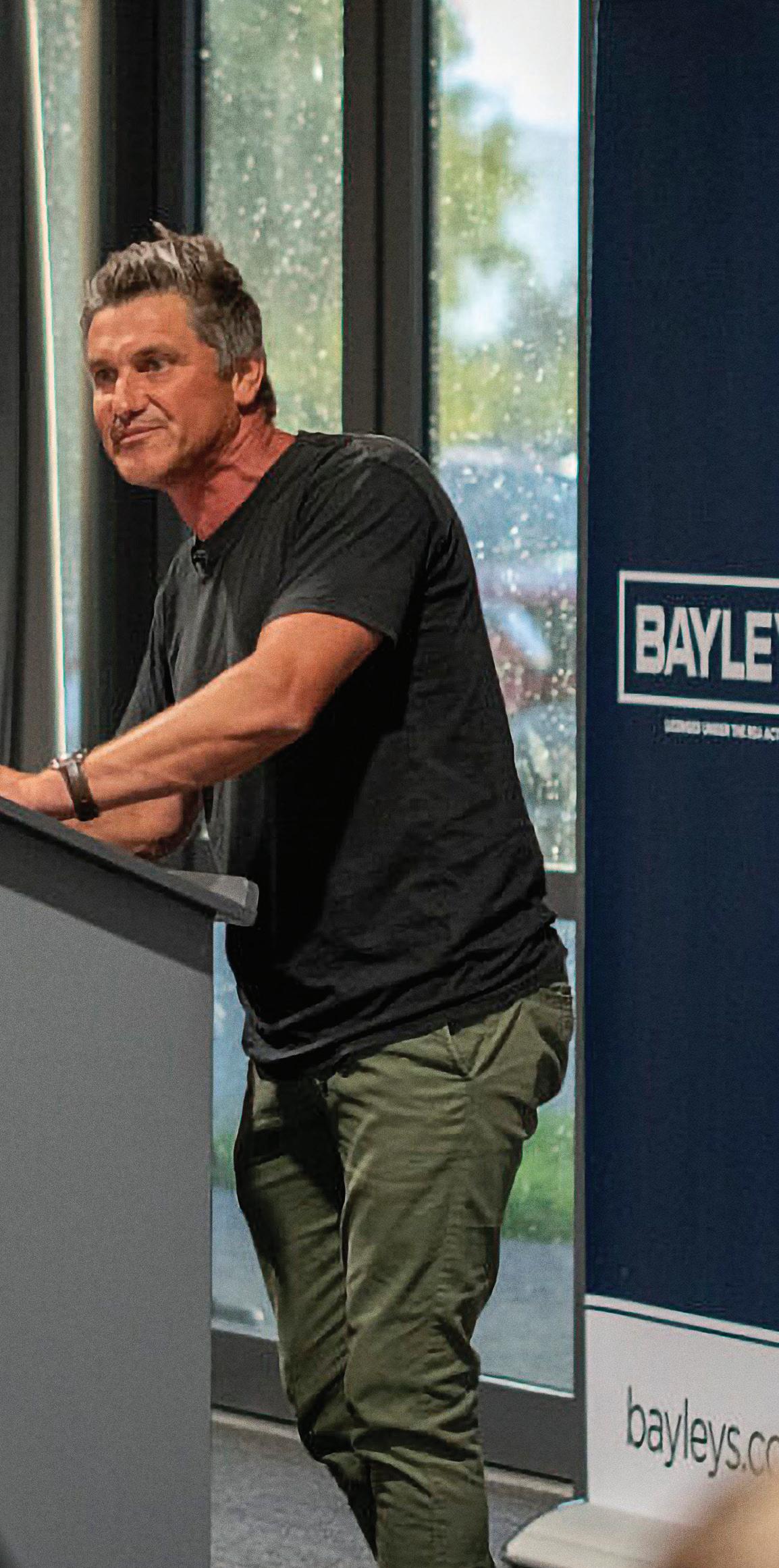



When times are tough on the farm, the Rural Support Trust is ready to support its community and people.
The Rural Support Trust is a charitable organisation set up to support the rural community when times are tough. They can assist with health and wellbeing (including mental health), financial pressure, employer / employee support and adverse events.
Bayleys is proud to be involved with The Rural Support Trust at a national level. We support the Matt Chisholm Time Out Tour – an initiative that helps rural communities grow their understanding of mental wellbeing. During these events Matt discusses his own battle with mental health, and gives advice and strategies to assist others. For more information visit : rural-support.org.nz/time-out-tour
As New Zealand’s number one rural real estate brand, the Bayleys Canterbury Country team spends a lot of time with farmers, and with many farmers in our team, we’re deeply involved in rural communities. We understand the challenges that farmers face and appreciate the great work of the Rural Support Trust.
Bayleys Ashburton 03 307 7377
Bayleys Christchurch City 03 375 4700
Bayleys Darfield 03 975 4559
Bayleys Diamond Harbour 03 329 4161
Bayleys Hanmer Springs 03 315 7717
Bayleys Leeston 03 375 4700
Bayleys Methven 03 303 3093
Bayleys Rangiora 03 311 8020
Bayleys Rolleston 03 347 9949
Bayleys Timaru 03 687 1227
10 June 2024 CANTERBURY FARMING HEALTH ON THE FARM Residential
Commercial
Rural
Property Services
/
/
/
BAYLEYS
WHALAN AND PARTNERS LTD, BAYLEYS, LICENSED UNDER THE REA ACT 2008
AND THE




Winter is here

Personally, I hate the cold and the winter has always been challenging for my mood and overall well-being.
] by Kereama Carmody
The five pillars of wellbeing is a good reminder to have that self-check in:
Healthy Food
It’s a challenge for anyone in this current environment to spend up large on groceries Remember you can eat healthy on a budget – try seasonal produce and cheaper cuts of meat slow cooked. It just takes good planning and time.
If you are shepherding, sometimes it can be hard to get off the farm to do grocery shop so remember to plan ahead. I’m hoping the boss is looking after you with meat.
Also check out Jamie Oliver’s cheap and cheerful recipes: https://www.jamieoliver.com/recipes/category/course/cheapcheerful
Sleep
How hard is it to get out of bed in the winter months? As the days get shorter, we have less motivation to take part in physical activity outside of work. Try and keep the exercise up because it will help with sleep quality and stress management.
Connect
It can be tempting to hibernate from the outside world when it’s cold. Isolation can have a negative effect on your mental health so

even if you can’t get out, keep in touch and with friends and family via Facetime/social media or a simple phone call. Keeping in touch via Snapchat can bring a laugh and break the boredom up to. Check out if there is a NZ Young Farmers club nearby to if you are working in isolation. A great place to meet new people.
Active
This is the easiest thing for me to do in the winter months. I can’t sit still at anytime so am always looking for things to do.
However, this is not the same for everyone and many of you struggle in the winter months to find the motivation or energy to exercise. Combine this pillar with ‘Connect’ and head (run) to the top paddock with the boss or farm hand. Check out Kane Brisco’s Facebook page.
Kane is based in the Taranaki and is doing some pretty amazing stuff in the wellbeing space. Facebook.COM/FarmfitNZ
Mind
Keep doing the things you enjoy during win-
ter months. Try not to sweat the small stuff and focus on the things you can control rather than worrying about the things you can’t. Dull weather can play havoc with our mood and lack of sun has a negative effect on our mental wellbeing. Identify your signs and don’t be scared to reach out to someone when you need a yarn or to share a problem. Keep warm!
To contact Kereama: Phone Kereama Consulting 021 222 1160, email: kereamacarmody@gmail.com or visit: www.kereamaconsulting.co.nz










CANTERBURY FARMING June 2024 11 HEALTH ON THE FARM Step out with confidence! Say goodbye to varicose veins, without surgery. Book a FREE initial assessment. No Surgery. No downtime. Covered by most health insurers. Endovenous Laser Ablation or by Ultrasound Guided Sclerotherapy. 0800 256 654 www.transformclinic.co.nz Christchurch | Dunedin | Queenstown

12 June 2024 CANTERBURY FARMING



A biological approach to pest control with BioActive Soils
It’s often said, “it all starts with the soil” because it’s the foundation of your farm.
which naturally resists pests such as grass grub, porina, root weevil and aphids and the damage they create.
It’s also a complex, living environment which needs care and attention to maintain and perform optimally. Get it right and your farm foundation will be naturally healthy, strong, and resilient, thereby providing the same for your pasture, crops, and animals.
Biology is at the core of our solid AgFert products, so we provide a living fertiliser designed to feed and enhance the soil biomass with each application. Our key inputs combine aquatic, biologicals, and natural ingredients to create a high-quality fertiliser baseline which is independently BioGro certified, guaranteeing its positive environmental fit.
Using this baseline input, we then blend in key growth nutrients (NPKS and others), in ratios which complement the critical biological component, resulting in a high performing BioChemistry fertiliser solution for a healthy soil and pasture environment
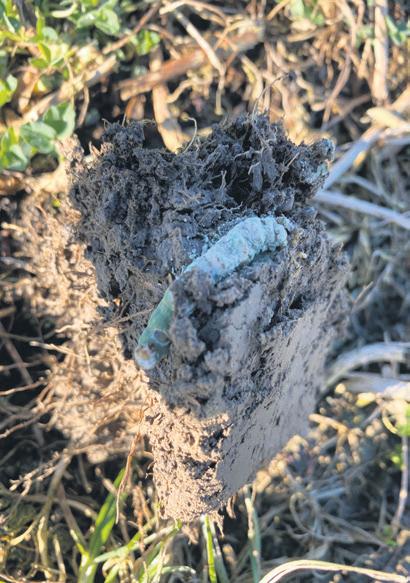

Our BioPest-N product has been specifically designed for short – and long-term pest control by maintaining soil health, and creating an environment where strong healthy pasture and crops thrive.
Its natural biocontrol inoculants kill feeding grubs by way of milky spore and amber disease soon after application, while ongoing control is achieved as the biological inoculant becomes part of the soil profile.
Conversely ongoing chemical spray use can degrade a healthy soils natural resistance to insect pests, and according to a large number of farmers insect pests keep returning year after year even after spraying with insecticide, as most pests thrive in damaged and unhealthy environments.
As Albert Einstein once said “Insanity is doing the same thing over and over again and expecting a different result”.



BioActive Soils helps farmers build health and resilience into their farms from the ground-up using their locally made biological solid fertilisers and pest control.


The way forward for long term con-
The way forward for long term control is to create a healthy soil, pasture and crop environment that naturally resists pests. BioPest-N rejuvenates (recolonises) your soil’s biological immune system.





CANTERBURY FARMING June 2024 13 + Freight & GST. Min. of 120kg PER/HA $97 PER/HA BULK PRICE FROM A solid ag-fert that utilises natural biocide and is harmless to soil life and animals. Kills pests with a biocontrol cocktail of healthy soil microorganisms. For more information call Steve 021 779 919 Stop grass grub, porina, aphids and armyworms in their tracks! Mt Somers Excavation Ltd GENERAL FARM MAINTENANCE • ALKATHENE PIPE IRRIGATION MAINLAND TRENCHING • 8 & 20 TONNE DIGGERS TIP TRUCK & TRAILER • GRADER SCREEN SHINGLE SUPPLIES • TREE REMOVAL Alistair Parris Owner/Operator • Ph: 027 434 7278 20 Hinds Gorge Rd RD8, Ashburton 7778 E: mtsomersexcavation@xtra.co.nz www.mtsomersexcavation.co.nz ]
Article supplied by ] BioActive Soils



Dairy farming family planting native trees for future generations
Dairy farmers Doug, Penny, Josh and Bayley Storey have planted more than 25,000 native trees on the family farm, adding to a generations-old native forest.
]Article supplied by DairyNZ
The forest includes kahikatea, totara, rimu, pokaka and matai and was fenced off 30 years ago to protect it.
Doug said the farm, near Te Awamutu, has been in the family for six generations, and his parents John and Susan are also involved in the farm’s environmental work.
“We embarked on the sustainability journey because we want to connect even closer to the land and enhance the natural beauty of the farm,” Doug said.
“We want to keep eeling in the river and for future generations to play in the forest like we did.”
With help from native planting specialists Koroneiki Developments and volunteers, the Storeys have planted 2.5km alongside the section of the Mangapiko Stream running through their farm, and plan to plant another 1km.
They planted around a wetland, which helps attract native birds and other wildlife.
The family have retired four hectares of land from farming to carry out more planting and have a pest management plan in place to help increase the bird population.
Doug is one of 400 environmentally fo-
cused farmers in the Dairy Environment Leaders network, created by farmers, DairyNZ and the NZ Farm Environment Trust in 2007. The network aims to empower leadership and create opportunities to support and share on-farm actions to reduce environmental footprint.
Doug’s son Josh and daughter-in-law Bayley help run the family farm and are passionate about sustainability and encouraging other young people into dairy farming.
“As farmers, we want to do our best to protect the land and enhance native wildlife, and love seeing tui, kereru and other native birds on the farm,” Josh said.
The Storeys are involved in a Waipa district community project creating an ecological corridor linking two mountains – Mt Pirongia and Maungatautari. A key goal is to create great habitat for wildlife, including native birds and bats.
The Storey farm is a stepping stone for birds and bats to rest and feed as they travel along the corridor.
“It’s a fantastic project and we’re excited to be helping boost biodiversity,” Josh said.
On the family farm and throughout the corridor, bat monitoring is underway and tuna/


freshwater eels are being monitored using matauranga Maori methods.
On the Storey farm, ecologist Britta Deichmann, has catalogued all the native trees, which Josh says will be a great record for future generations.
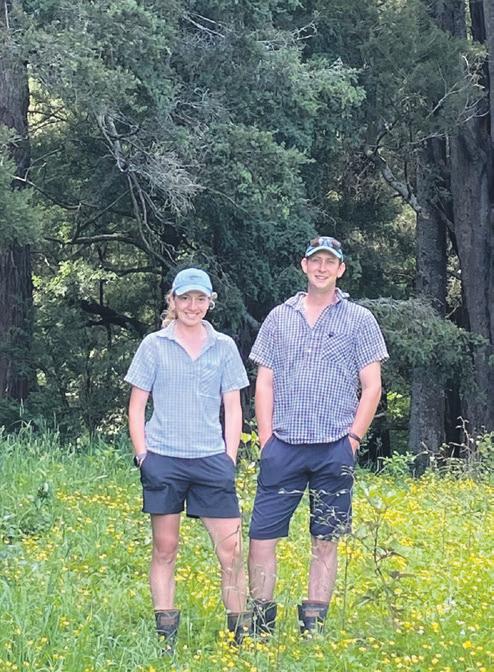









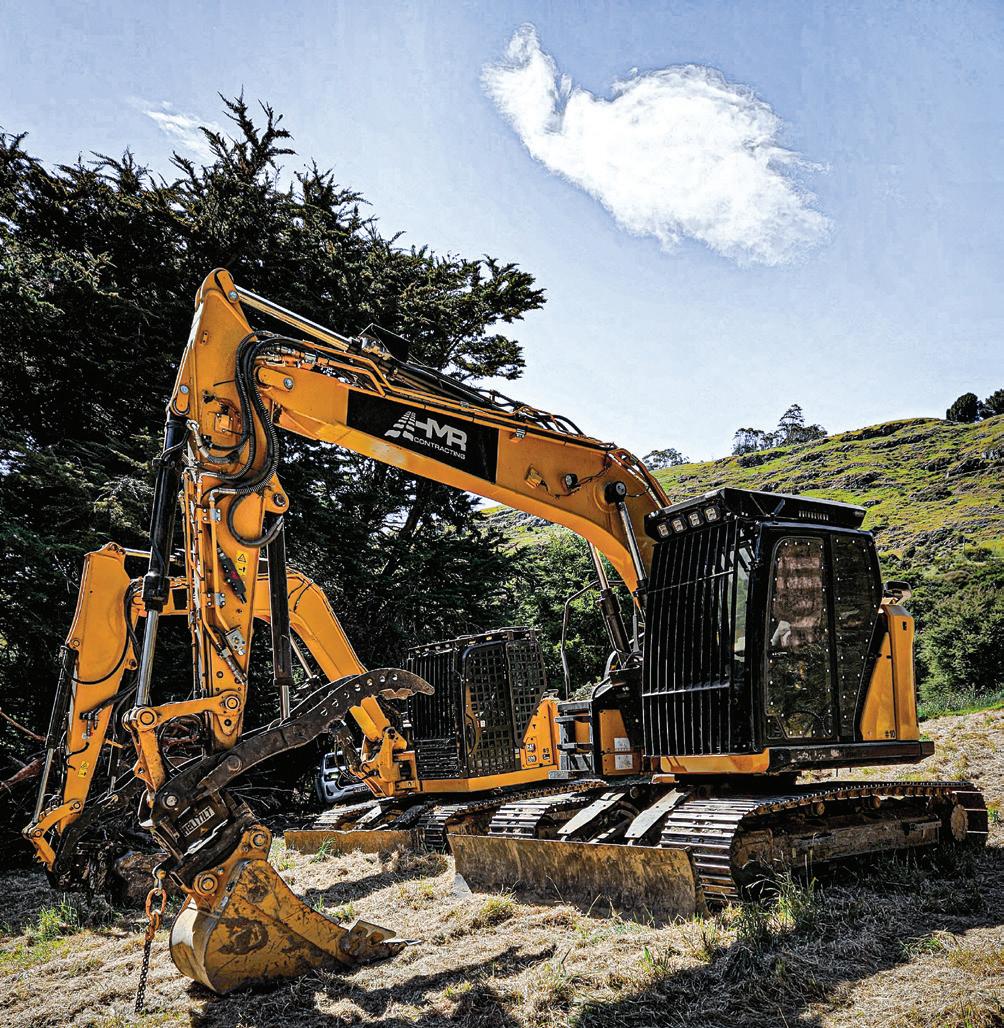

14 June 2024 CANTERBURY FARMING
Sustainability focus: Dairy farmers Josh, Bayley, Penny and Doug Storey are passionate about environmental initiatives on their farm and in their community.
Planting for the future: Josh and Bayley Storey are planting more native trees to add to the generations-old native forest on their family farm.



High sugar ryegrasses offer dual solution
High performance ryegrasses bred through an innovative and award-winning forage improvement programme are making their mark according to a leading New Zealand seed company.
Article supplied by Germinal NZ Germinal New Zealand says their ryegrasses offer animal performance and environmental benefits to New Zealand farmers with their Aber High Sugar Grass (HSG).
Bred at the Institute of Biological Environmental and Rural Science (IBERS), the ryegrasses contain significantly higher levels of sugar, or water-soluble carbohydrates, than conventional ryegrasses.
Germinal’s trials and product development manager Sarah Gard said this has been verified by independent trials in New Zealand, where data is showing a significant increase in the sugar content of the new ryegrasses compared with many other conventional counterparts.
“Aber HSGs also offer a higher metabolisable energy content than standard diploid ryegrasses,” Gard said.
“Higher sugar means more energy, and this is significant in the way it helps ruminant livestock improve their conversion of grass protein into meat and milk.
“Our grasses create a better balance of energy and protein in the rumen, allowing the microbes responsible for the breakdown of forage to operate more efficiently, so more protein is converted to milk and meat, and less is excreted into the environment.”

Well fed: Sheep set-stocked on an Aber HSG and clover mix are partitioning more energy into meat production, while reducing their methane emissions, according to Germinal New Zealand.
Gard said independent data has shown a 10% increase in autumn milk solids from cows fed Aber HSG.
A Southland based trial run by Abacus Bio demonstrated lambs grazing Aber HSG finished 17% faster and 19% heavier than
lambs grazing a standard NZ ryegrass.
“Reducing the amount of nitrogen that is excreted means less impact on the environment, specifically in terms of a reduction in greenhouse gas emissions, including methane, nitrous oxide and ammonia.”
In New Zealand, the release of methane gas from ruminants amounts to one-third of greenhouse gas emissions.
“New Zealand data has shown a 9% reduction in methane emissions from sheep fed on the Aber HSG variety AberMagic when compared to a conventional diploid variety. Similar research has also shown rumen ammonia to be significantly lower in cows grazing Aber HSG.
“This science has already been recognised in the UK, where livestock farmers involved in the Asda, Sainsbury’s and Waitrose supply chains are encouraged to use Aber HSG varieties to improve production efficiencies, animal performance and reduce their carbon footprint.
“Grass that improves the performance of livestock while reducing their carbon footprint offers New Zealand farmers a real winwin.
It’s a modern solution to today’s farming challenges and technology that requires no notable change of system,” Gard said.

Ag JD750a Seeder parts
Pivot rebuild kits
Bonilla seed tabs, Seed boot mounting repair kits


Boots, Discs, V8 firming wheels, HD gauge wheels and Martin closing wheels






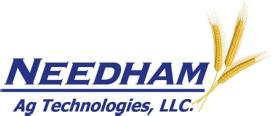
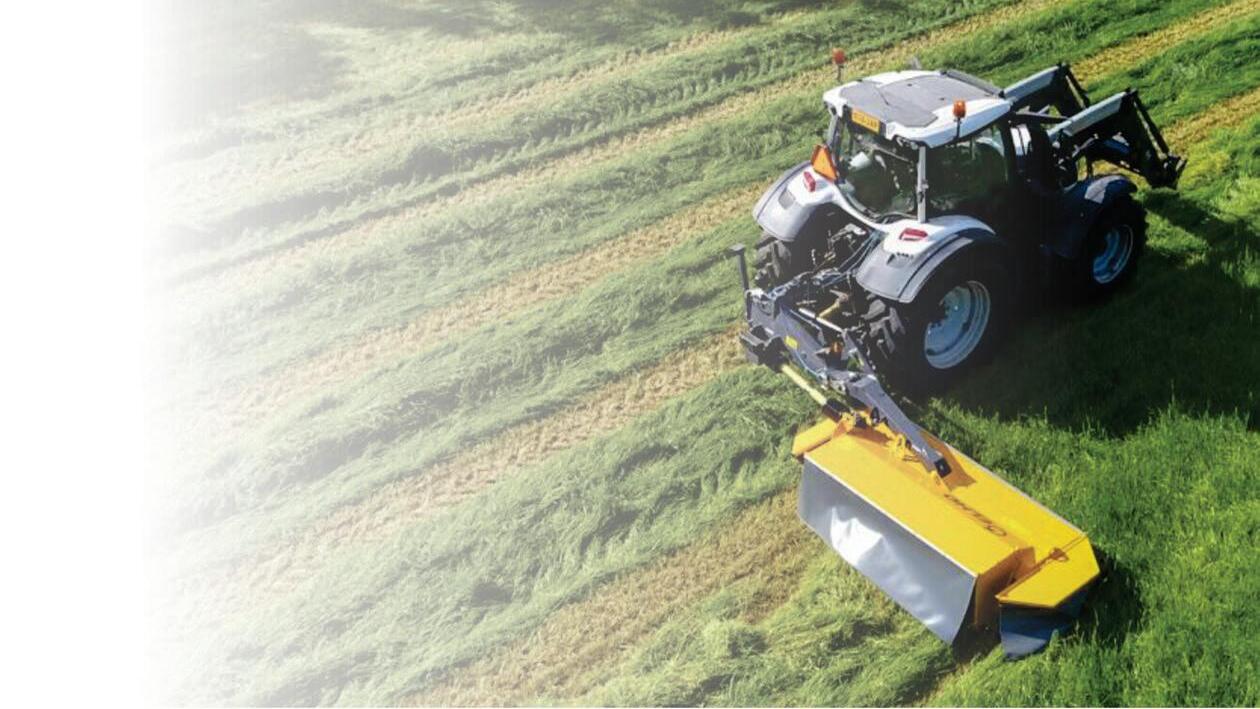
CANTERBURY FARMING June 2024 15 Needham
•
till hardware, Clutches and Controllers • Shop at our online store! 0275 083 789 unearthag.com
Maize Planter No -



Shearing sponsorship extended
PGG Wrightson has extended its sponsorship of one of shearing’s most prestigious and demanding events.
] by Kent Caddick
Established in 1973, the PGG Wrightson Vetmed National Shearing Circuit pits the top shearers against each other based on versatility over five separate rounds. In terms of competitive shearing prestige, the circuit is second only to the Golden Shears.
National Shearing Circuit chair Warren White said the event is a searching test for the complete shearer.
“To win you have to be able to handle every breed of sheep and demonstrate your shearing versatility,” White said.
“This is for the most highly skilled all-round shearer. You must be able to adapt, change your style, and handle different breeds, from fine wool merinos, which are softer on the skin, to coarser types that require a different technique.
“To be able to change from one breed to another demands a special sort of shearer,” he said.
Aiming to find New Zealand’s best allround shearer each summer, the circuit was first held as a three-round series, opening at the New Zealand Merino Championships and ending at the Golden Shears. To win the PGG Wrightson Vetmed National Shearing Circuit, shearers now compete in five rounds on five different types of wool through the summer. Starting in Alexandra in October with the fine wool section; the Circuit then moves to full wool hoggets in Waimate; Corriedales

in Christchurch in November; then lambs in Rangitikei on Waitangi Day; heading for the final heat in Pahiatua later in February where competitors show their prowess on second shears. While the first and final heats, in Alexandra and Pahiatua, are compulsory, competitors can opt out of the other rounds.
Based on points earned through those five rounds, a dozen shearers go through to the semi-finals, where all start again from zero. Held on the eve of the Golden Shears in Masterton, two semi-final heats featuring three of the wool types go head-to-head on Saturday
morning, from which the top-six progress to the final on three sheep of each of the series’ five breeds on Saturday night.
One of the most enduring sponsorship associations in New Zealand sport, the event, which was first contested in 1972-73, has been sponsored by PGG Wrightson since the 2002-03 season.
General Manager of PGG Wrightson Wool Grant Edwards said the company is proud of its long association with the event.
“Shearing is a key part of the wool supply chain. Without shearing we wouldn’t have a
wool business,” Edwards said. Co-sponsor Vetmed is also extending its sponsorship of the event.
Shearers compete for the McSkimming Memorial Triple Crown, and the winner also earns automatic selection to represent New Zealand in the Trans-Tasman series, wearing the silver fern alongside the Golden Shears Open champion and the national Merinos champion.
New Zealand’s most celebrated shearer Sir David Fagan was crowned national circuit champion





16 June 2024 CANTERBURY FARMING
Under pressure: Leon Samuels competing at the first round of the 2023/2024 PGG Wrightson Vetmed national Shearing Circuit at the nZ Merino Champs in Alexandra.
Photo supplied by NZ Merino Shears.



Ram sale generates over 4000 meals for foodbanks
The sale of a prized Southdown stud ram has helped to put almost 4300 meals on the table for people facing food insecurity this year.
] by erin Speedy
Clifton Downs Southdown stud breeder Chris Medlicott, who is based at Hook near Waimate, sold the ram in his on-farm sale in November, with the proceeds donated to Meat the Need and Feed Out.
The proceeds of the sale created 4295 mince and milk meals for 110 foodbanks and community organisations nationwide.
Medlicott said he was already aware of the charity, and after seeing Shrimpton Hill Herefords’ donate a lot in their bull sale it prompted him to do the same with his own ram and ewe sale.
“I’m really proud that we produce top quality New Zealand food, but there are some people in this country who can’t afford to eat it,” he said.
“We want all New Zealanders eating produce off our farms and that was really the reason for me to donate.”
Passionate about his Southdown Stud and breeding genetics, every year Medlicott hosts an on-farm ram sale with up to 80 sheep and donates a lot to a charity or organisation.
“It’s always a good feeling that you’re helping someone in need and in all walks of life really.”
He said the feeling of being able to provide more than 4,000 meals of top-quality, homegrown protein to those facing food insecurity through his donation was “quite priceless”.
“Donating is always a good thing to do, to be honest I think New Zealand society has lost the giving aspect a wee bit so it’s nice to be able to make a bit of an impact on whoever needs it.”
Although times are tough on farms with on-farm inflation the highest in 40 years at 16.3 percent, (two and a half times the consumer price inflation rate), he said he would still choose to donate again.
Charitable: The proceeds of the sale of Waimate farmer Chris Medlicott’s prized Southdown stud ram were donated to Meat the Need and Feed Out.
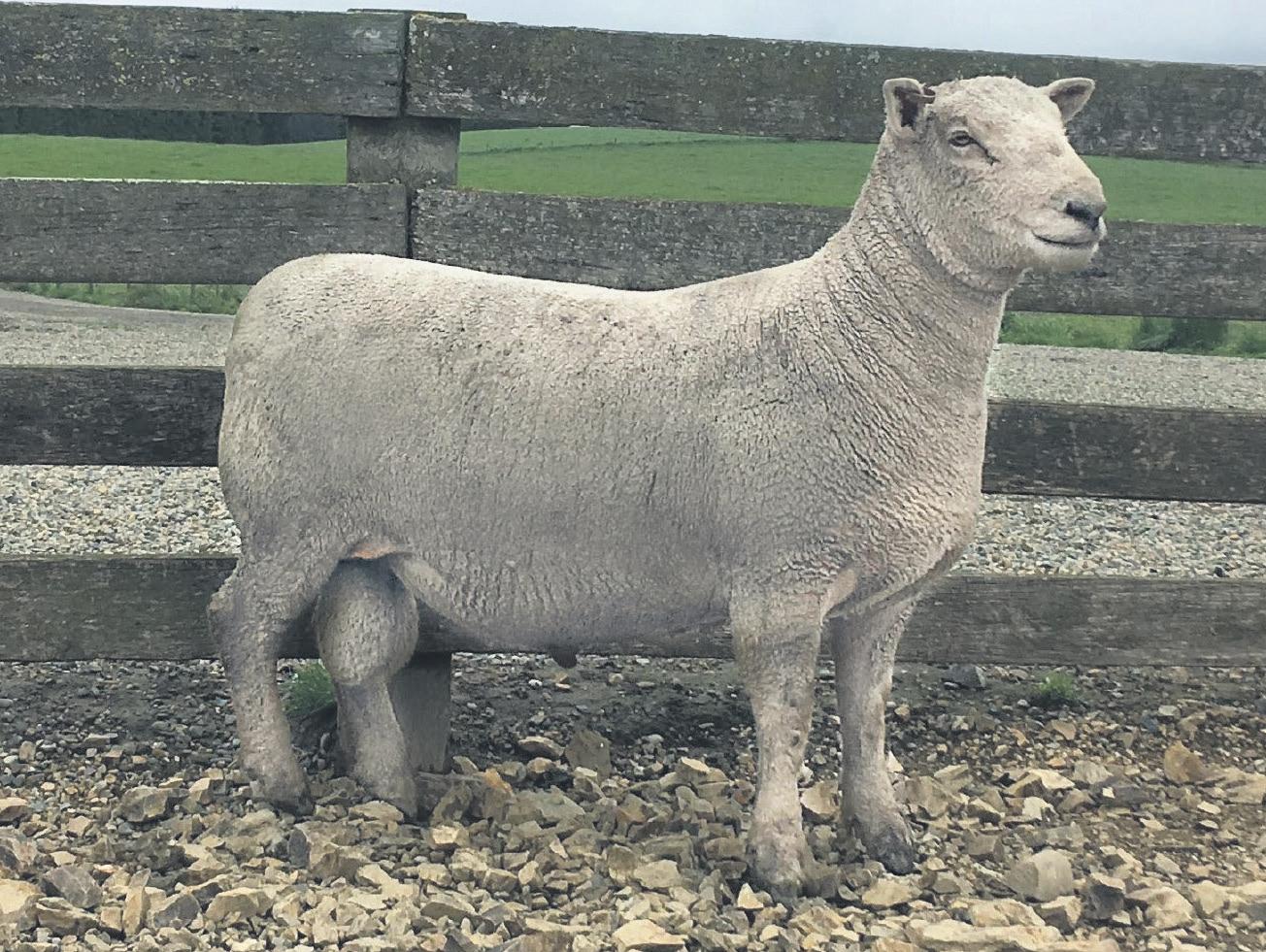
“Donating the proceeds of a ram is a different measure to donating cash from your bank account. Besides, I think you get more generous with age.”
Meat the Need and Feed Out facilitate donations of cash, livestock, and milk to turn into meals for more than 110 food banks and community organisations nationwide through processors Silver Fern Farms, Miraka and Fonterra.
For more on how to donate to thses charitries go to www.meattheneed.org or www.feedout.org
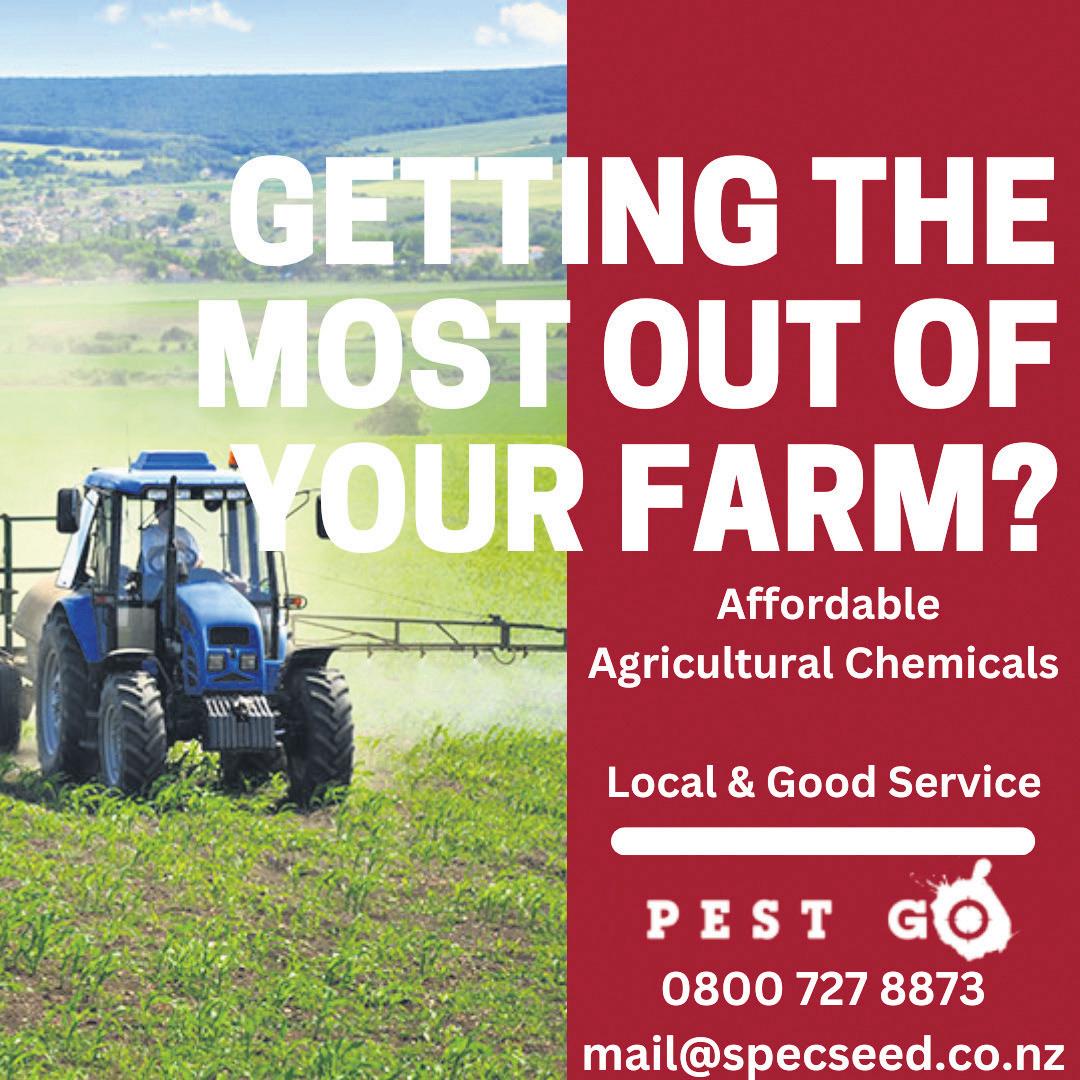





CANTERBURY FARMING June 2024 17


Fencing event not to be missed
Fencing Contractors Association of New Zealand (FCANZ), the industry body for fencing contractors, is bringing its annual National Fencing Field Day to the Rangiora Showgrounds on Wednesday, August 7.
] Article supplied by ] Fencing Contractors Association ] of New Zealand
Open to the public, the National Fencing Field Day showcases the latest fencing products, tools, and machinery for rural, residential and security fencing. It is a unique event that provides attendees with an unrivalled opportunity to see equipment and techniques in action, meet industry suppliers, watch industry best practice demonstrations, and take part in a wide range of competitions.
“Our mission is to raise the profile of fencing as a recognised trade that embraces best practice, adherence to quality standards and ongoing professional development. The National Fencing Field Day is not just for our members, but for anyone who builds fences,” says FCANZ President Phil Cornelius.
Established in 2006, the Fencing Contractors Association (FCANZ) supports and advances the fencing industry in New Zealand.
The Association works with members and industry partners to ensure that fencing is a recognised profession and a career and that best practices are adopted across the industry.
FCANZ keeps members informed about the latest fencing products, technical information, trends, and developments, including access to best practice guidelines, templates, and codes of practice.
In addition, FCANZ hosts various informative networking events throughout the year, including an annual conference and Fencing Best Practice Days throughout the country. These events provide information on new fencing techniques, health and safety, product feedback, pricing and technical information.
The Association recently finalised a career pathway and qualification structure for the rural sector of the fencing industry. Made up of the NZQA Certificate in Fencing (Levels 3 & 4) and the Certified Fencer and Accredit-


Posts & Strainers

Generously Sized. Guaranteed. Processed locally. Competitively


ed Fencing Contractor endorsements, the qualifications provide expectations of quality standards for the industry and, therefore, surety for those who engage FCANZ-endorsed contractors.
“Skilled fencers are in demand, and it is time for fencing contractors doing quality work to shine,” says Phil. “Our National Fencing Field Day helps support that by connecting the right people with each other.”
Nelson-based FCANZ member John “Noksee” Noakes adds, “I love the social side of FCANZ events, catching up with like-minded people, having a yarn, running ideas past peo-
Open to the public: The National Fencing Field Day showcases the latest fencing products, tools, and machinery for rural, residential and security fencing.
ple, getting opinions, and making new friends who you can ring for advice when needed. It’s such a great industry to work in.”
For more information and to find a fencing contractor in your area visit: www.fcanz.org.nz
FCANZ National Fencing Field Day, Rangiora Showgrounds, 10am to 3pm, Wednesday 7 August 2024. Entry fees: Adults $20.00, Full-time Students $5.00, FCANZ Members & employees $10.00. There is no charge for pre-schoolers or FCANZ members who are attending Conference24.











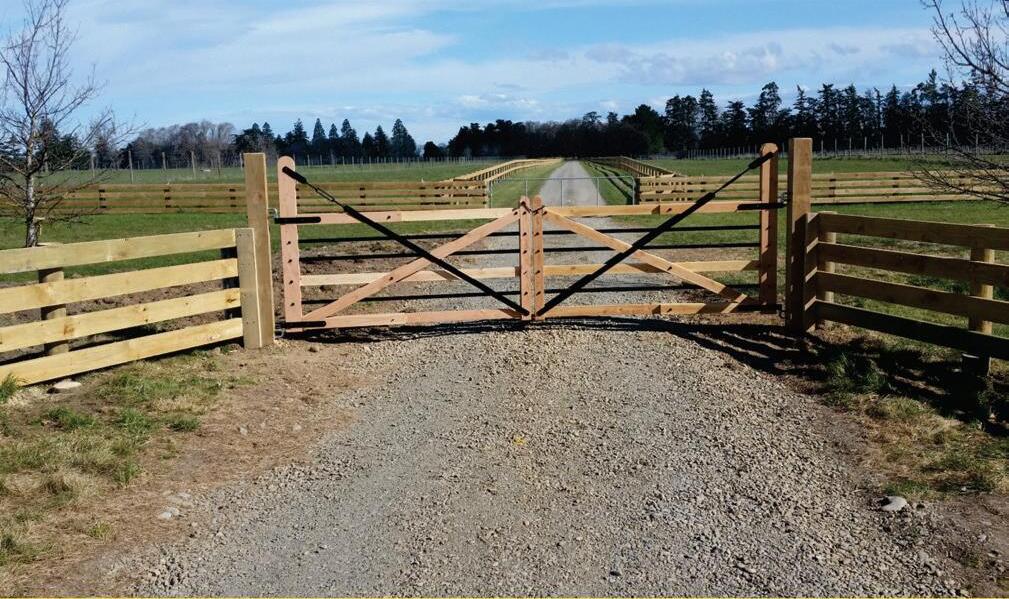



•
• Hydraulic weight distribution system provides 100% even compaction of soil.
• Comes in working widths from 5.3m-12.3m



18 June 2024 CANTERBURY FARMING
Oamaru 434 8658 Timaru 688 2464 Ashburton 308 5304 Against attack from insects & fungi
high strength
Tough posts
Place your order with our experienced team now Call Alastair Robertson | 027 435 2642 AMBERLEY | LEESTON | ASHBURTON | TIMARU | OAMARU THAT’S HOW WE ROLL
We recommend that you use proven
Southern
priced.
60mm CRMO4v-steel
with rubber suspended bearings
shafts
• Hydraulic cracker board with parallelogram eliminates lumping in fields.
Ultimate seedbed prep The high capacity Rollomaximum is a precise seed bed cultivator with built-in front and rear rollers. The combination of rollers and cultivator tines regularly achieves a seed bed in a single pass with the change to and from transport is done hydraulically from a stationary position roller. Comes in working widths from 6.2m – 12.4m. CALL US ABOUT MODELS DEMO
Rollomaximum #1 Selling roller in the UK www.cochranes.co.nz
Maxiroll


Full-time production for recycled plastic rails
New Zealand farmers have always been an innovative bunch. Now the award-winning Kiwi start up Future Post, founded by Waikato farmer and fencer Jerome Wenzlick, has added a new product to complement its recycled post range, a great looking recycled rail.
]
Supplied by Future Post Ltd
Made from recycled waste plastics diverted from landfill, demand for Future Posts on farms has been strong with landowners recognizing the simplicity offered for electric fencing – no insulators are required as the posts are already non-conductive, as well as longevity for under irrigation lines and waterways fencing where the no rot, CCAfree benefits of the solid plastic posts really come to the fore.
Landscaping and equine sectors have also been quick to take a liking to the posts due to the smart modern ‘Equestrian Black’ look which comes from the addition of UV Carbon Black, providing consistent colour and long-lasting UV stability.
Posts that require no painting or ongoing maintenance offer huge time and cost saving and immediate appeal in the fence line.
Of big benefit to horse owners, Future
Post products are proving highly durable to chewers and crib-biters – animals don’t chew them – meaning fencing will remain looking good for years to come.
The company has taken its new recycled rail idea to a number of regional events over the last few months and, due to overwhelmingly positive feedback, are excited to report they have now added rails into full-time production.
At 145mm x 50mm x 3m, the 100% recycled plastic rails are already proving popular for smart feature fencing, equine properties and landscaping uses where the no rot, no chew, no paint benefits add great value in terms of longevity and looks.
With a sharp price point of just $9.50+GST per meter ($28.50+GST each), the Future Post Rail is an attractive option with potential for many applications – from property fencing and stock yards to durable boardwalks and edging.







any
installation.
“There is nothing worse than seeing timber post and rails getting chewed down overnight by bored horses,” Kelly said.
The opening of Future Post’s South Island factory means local production has made Future Post much more accessible to the South Island.

Alongside the domestic soft plastic collection scheme in participating stores, commercial recycling partnerships with the likes of Zoetis, LIC, Fonterra and Virbac also shows that demand for more sustainable measures on farm are being sought, with pro-active companies taking responsibility for their waste products at end of life, followed by farmers closing the loop by using the 100% recycled posts back on farm. It’s a win-win all round.

CANTERBURY FARMING June 2024 19 100% NZ Made From Recycled Plastic Locally processed into highly durable posts & rails BioGro Certified - don’t leach any nasties Zero Maintenance - no painting or staining, at all Non-conductive - no insulators required Stock don’t chew - even goats and horses! Solid UV stable recycled plastic - they don’t rot Contact us now for more information info@futurepost.co.nz or phone Al on 021 908 906 futurepost.co.nz Future Proof Your Fence RAILS now in production! Alongside our popular square and round posts
Kelly Williams at the well-known Tall Tree Stud, Templeton, already has Future Posts installed onsite which have resisted
chewing from horses since
Future Post has added a new product to complement its recycled post range – great looking recycled rails.




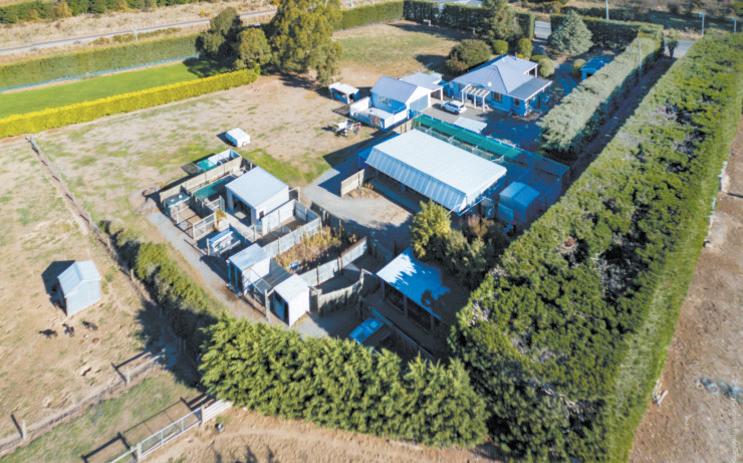














20 June 2024 CANTERBURY FARMING Four Seasons Realty Four Seasons Realty BUY & SELL WITH THE LEADERS IN RURAL & LIFESTYLE Four Seasons Realty PARTNER YOUR Country Since 2017, Harcourts Four Seasons has proudly held the title of the leading rural lifestyle franchise in Canterbury, clinching the Harcourts No.1 rural lifestyle award year after year. 0800 789 10 11 Rurallifestyle.kiwi Licensed Agent REAA 2008
Four Seasons Realty

Seasons Realty


















CANTERBURY FARMING June 2024 21
Four
Linking the economy and energy
Kiwis are experiencing bumps ultimately driven by the relationship between their economy and its energy supply.

 ] by Solis norton
] by Solis norton
At the highest level, there is a simple and virtually perfect correlation between energy use and economic activity. But at the more detailed level this relationship becomes complex and difficult to predict.
Major global spokespeople for ‘Big Oil’ are more openly challenging the great global green energy transition. They say the green energy options are not yet ready. They say oil and gas will continue to drive economies for years to come.
They also say massive investment is needed to get more oil and gas. Amin Nasser, CEO of Saudi Aramco, the world’s largest oil company, has suggested the present decline rate of global oil production is about six percent.
These people are neither commentators, nor activists. They are experienced professionals. Sure they have a barrow to push, but we all do.
Ultimately this energy thing and the printing of an awful lot of cash during the Covid period is driving the global cost of living crisis.
Four current points are worth noting about this situation:
• We note the New Zealand economy is now officially in recession by all definitions.
• We note that Finance Minister Nicola Willis has asked New Zealand’s public services to reduce their spending by 6.5 – 7.5%.
A close approximation to Amin Nasser’s decline rate.
• We note that things in the rural sector are tough. Neal Wallace’s article in the March Farmers Weekly reports farmer spending on fertiliser applied from aircraft halved last year and applications from ground spreaders were back about a third. Beef and Lamb indicate on-farm inflation in the year to March 2023 was 16.3%.
• We note Big Oil companies such as BP and Shell are hitting the brakes on emissions reduction targets and their investment in clean energy. Their emissions could be reduced faster with more renewables, carbon capture, or hydrogen but none of these alternatives are ready to replace oil and gas.
So returns from those technologies aren’t there for shareholders. Hence these companies are maximising returns from oil to lure back investors who have shifted en masse in the last decade or more into funding renewables.
On these four notes we can deduce four more things.
• We deduce that the chance of national and global ‘Growth’ (I use the term broadly) peaking this decade, and even over the few years we’re in now is very high. Yes, yes, I know, all been said before and always proven wrong, but the supporting evidence is increasingly compelling.


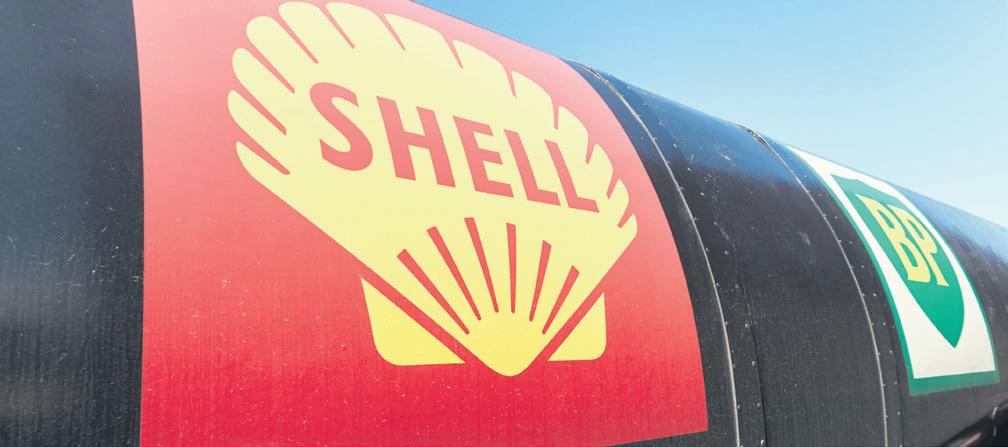
• We deduce that Minister Willis is unaware of this situation. To help, she and her colleagues should receive advice directly from a group that represents the likes of Energy Resources Aotearoa and other entities who understand the link between energy and the economy.
• We deduce that maintaining prosperity and productivity in agriculture over the next decade will be all but impossible. To help, the Ministry for Primary Industries should convene a group to assist it in understanding the relationship between energy and agriculture. The understanding would be informed by collaborative research by DairyNZ and the Beef and Lamb Economic Service. A coordinated and informed response would come from those research outcomes.
• We deduce that an interesting discourse will emerge as governments and the public realise that the low emissions transition is not attainable in the form we envisage. Maybe we’ll repaint it light green. Maybe we’ll discredit climate change. Hard to predict, that one.

We look forward to seeing you at SIDE, talking about on-job learning and up to 50% off* fees for dairy programmes in 2024 Visit primaryito.ac.nz to find out
RURAL MATTERS
‘
We note Big Oil companies such as BP and Shell are hitting the brakes on emissions reduction targets and their investment in clean energy.
We conclude that the path to 2050 need not be fraught and fractious provided the biophysical drivers of economic events are more widely understood. They are well documented but not well known. Mysterious but not a mystery. Beautifully simple but horribly late.




22 June 2024 CANTERBURY FARMING
News and views that matter to rural people We’ll see you at SIDE!
might
best
your farm.
what learning options
be
for
*Terms and conditions apply, visit primaryito.ac.nz/halfpricefees. Primary ITO is a business division of Te Pūkenga - New Zealand Institute of Skills and Technology
Jo Syme Ph: 027 231 3812
Kelly Falconer Ph: 027 703 9852
Sarah Milne Ph: 027 230 4397
CALVING
Give your calves the best head start
If you are preparing to rear calves this season, then look no further than Milligans Feeds’ range of high quality milk replacers.
] Advertorial by Milligans Feeds
Milligans Feeds have four specialist products that are designed to fit any rearing system: from the ultra-premium ExcelPlus Calf Milk Replacer; Classic CMR, the original go-to replacer for over 25 years; GOcalf Boost, a high performing finisher; and GOcalf Whey for the alternative protein option.
Whether it be a traditional Twice A Day feeding system, or alternative Once A Day system you prefer, our products give you the flexibility and performance anywhere, every time!
We also have you covered for other animals too, with our ‘Multi Milk Replacer’ or ‘MMR’ product, which provides the convenience of having one milk replacer that can feed all animal types, including lambs, goat kids, foals, cria, piglets, puppies, and kittens.
We also have our GOwhey range which are specialised whey-based powders for lambs, goat kids and calves. These can be used as a stand-alone replacer or be fed in a program with other replacers depending on your needs.
Our whey products are sourced from a leading European manufacturer where performance and quality are the leading requirements for best animal welfare.
Milligans Feeds also has animal supplement products to assist with the early care and welfare of new-born animals, namely ExcelPlus Colostrum and ExcelPlus Electrolytes. These two supplements are key inputs to successful animal rearing and husbandry.
Whether you are a lifestyle farmer or large scale farmer, you will know the importance of being prepared for the times when you have an orphan or sick baby at hand.
Milligans products are available throughout New Zealand at leading rural supply stockists. To see our range further, go to www.milligansfeeds.co.nz or give us a call on 0800 786 253 to discuss products and what may be right for you.
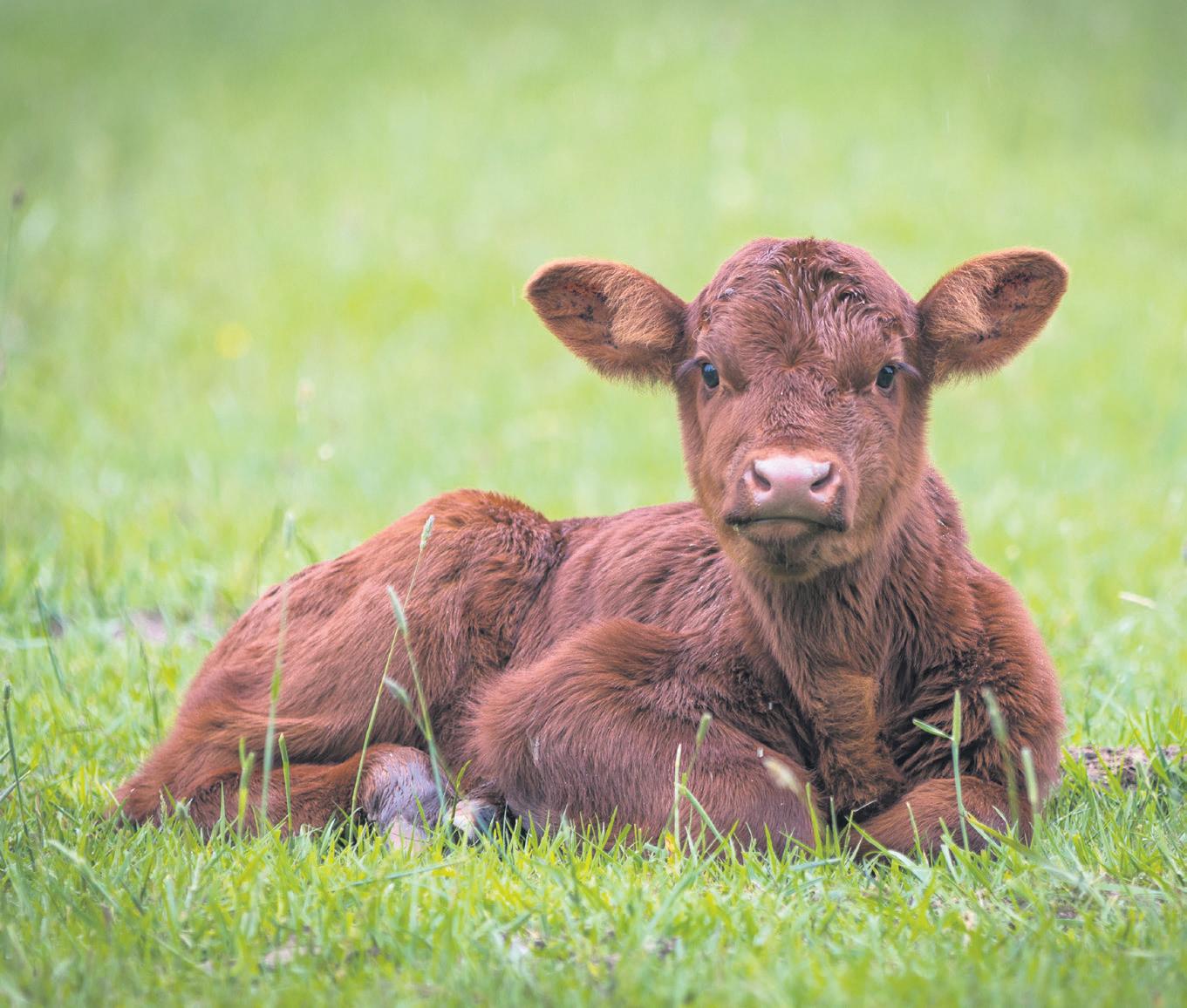









A proudly 100% New Zealand owned and operated family business based in Oamaru, North Otago, Milligans Feeds is one of New Zealand ’s leading suppliers of animal nutrition products.
Having over 35 years’ experience in producing high quality, top performing milk replacers, Milligans Feeds have been the choice for generations. With a growing range of milk replacers and animal health supplement products, Milligans has you covered!
Check out www.milligansfeeds.co.nz for more information on the range and where to buy.
CANTERBURY FARMING June 2024 23 0800 786 253 | feedsales@milligans.co.nz | www.milligansfeeds.co.nz
Give your calves the best head start CanterburyFarming June Edition 180x260.indd 1 18/05/2021 10:25:45 am
CALVING
Milligans Feeds’ range of high quality milk replacers is available throughout New Zealand at leading rural supply stockists.
Keep a watchful eye on your cows when it’s calving time
Cows close to calving, or springers, must be inspected frequently and most farms arrange for them to be checked at least every six hours and sometimes more frequently if conditions require it.
Article supplied by DairyNZ
If calving is not proceeding normally, remedial action must be taken and a moving vehicle must not be used to provide traction to assist calving.
Check springers for signs of labour regularly, quietly and thoroughly and record what you observe.
Walk quietly through the springer mob –

when cows are feeding is best. Don’t walk through the mob when cows are hungry and are waiting to be moved to fresh grass or a new break. Look for cows that are showing signs of labour.
Check cows at least four times a day.
Your manager will set a routine for springer checks.
Check all areas of the paddock and, de-

pending how good the fencing is, check the paddocks next door as well. Check drains, hollows, long grass, hedges – anywhere a calf could be sleeping.
Note the number of any cow or heifer that has started to show signs of calving, or has calved, and report to your manager so you can keep an eye on her progress.
Early signs of labour
• Swelling of udder can happen up to a month before calving.
• Milk dripping from teats.
• Mucus string from vulva (from plug of mucus that seals the vulva).
• Restless.
Calving will progress at different rates for different cows. Some may show all the signs whereas others may show very few signs.
Generally labour can be broken into two stages: preparation for labour and delivery.
Preparation for labour
An arched back shows the cow is restless and in preparation for labour. Other signs include: kicking and nosing at her side, restless straining, swishing tail in discomfort, tail raising, vulva swollen and flabby water bag protruding. The preparation phase can take up to six hours in cows and 72 hours in heifers.
Look for these signs when observing springers:
• away from herd and reduced appetite
• pelvic ligaments relaxed – vulva looks swollen and flabby
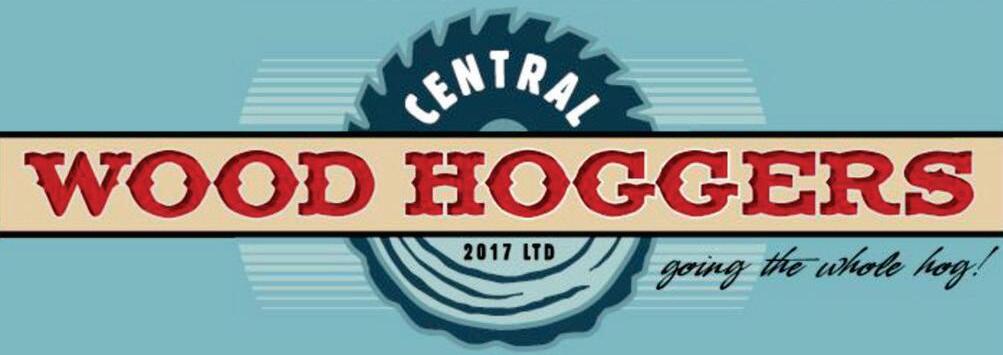
• dip between tailhead and pin-bones
• tummy less full as calf moves into birth canal/birthing position
• mothering other cows’ calves
• discomfort – swishing tail, arched back, restless, peeing, kicking and nosing at her side, tail raising
• straining/contractions
• water bag protruding.
Delivery
Cows should take 30 minutes to one hour to calf – no more than two hours. Heifers should take two to three hours to calf – no more than four hours.
During a standard delivery the following process will occur:
• The cow starts straining and pushing – two feet are visible within the water sack.
• Once the feet are 10cm clear of the vulva the head has cleared the pelvis. The chest of the calf has not passed through the pelvis at this stage and the umbilical cord is still attached so the cow is still providing oxygen to the calf.
• Once the head has cleared the pelvis, the cow may rest for a minute or two. Once the calf’s shoulders have cleared the pelvis, the birth will continue fairly quickly. The umbilical cord will have likely broken by this point and the calf will start to breathe on its own.
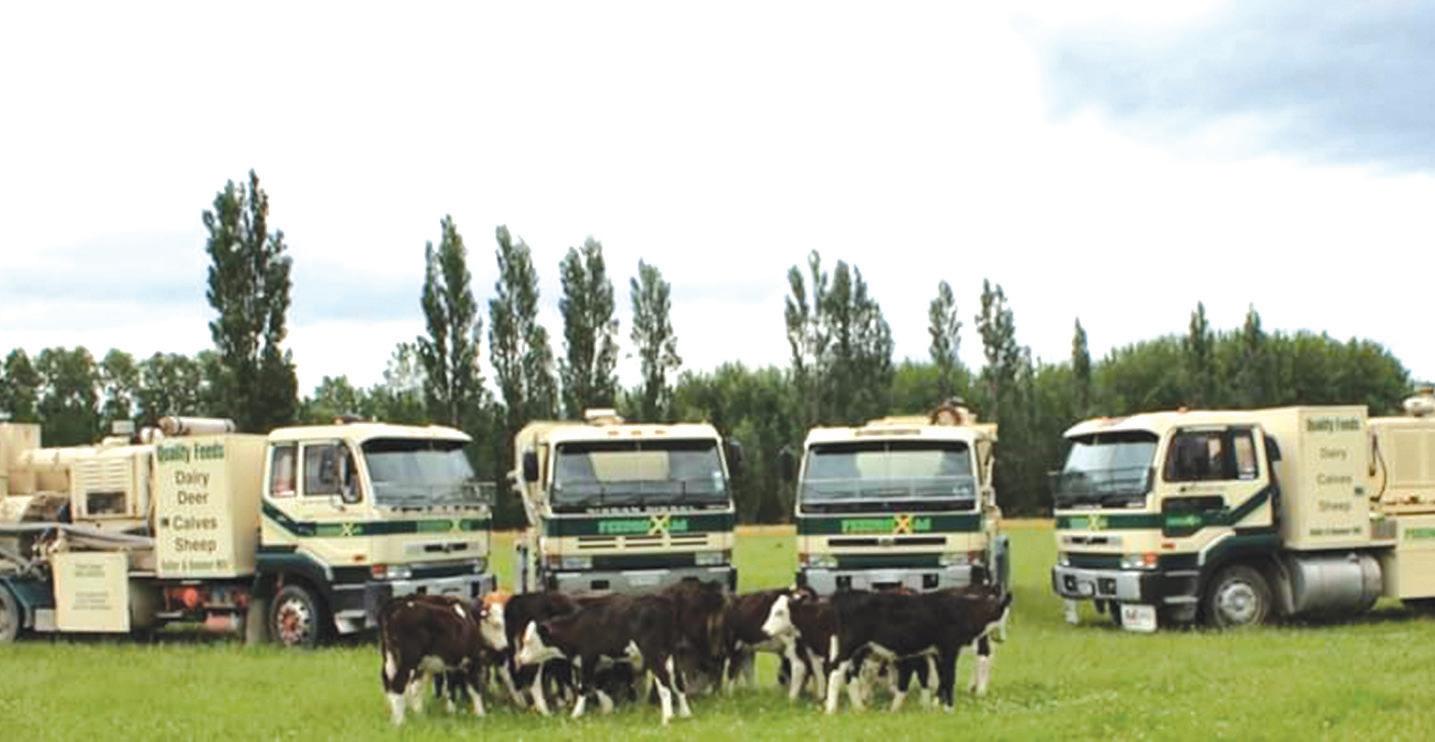
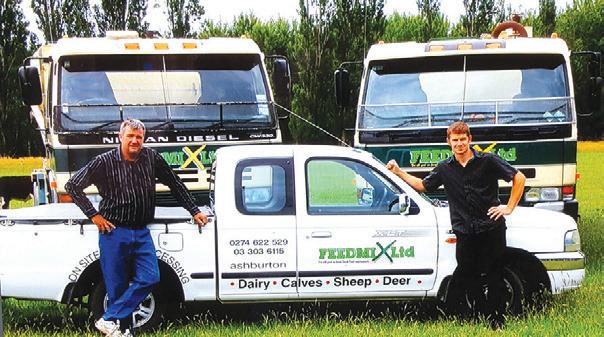


24 June 2024 CANTERBURY FARMING *Pricedisplayedappliestograinsuppliedbythefarmer www.feedmix.co.nz Stewart0274622529•Devin0279304906 FINDOUTHOWFEEDMIXCANWORKFORYOURHERD •ServicingCulverden-Oamarufortnightly •Madefreshon farmandcustomblended •Rolled,crushedorbruisedgrain,peas&maize •OtherMicro-ingredientscanbeadded • We’llevenunblockaugertubeswhilewe’rethere DAIRYMEALPROCESSINGCALFMEALPROCESSING from $40 pertonnefrom $170 pertonne Customblendingonfarm Traceelementsblendedif required Unblockingof rollermillaugertubes Grain rolling Yourgrainorgrainsuppliedbyus* Freshfeedprocessedonfarm Yourgrainorgrainsuppliedbyus* Suppliedinsacks, readytouse Priceincludesmolasses,premix minerals/vitaminsandbovatec CANBEBULKPROCESSEDANDTRANSPORTEDTOYOU
]
CALVING













Market stabilises at lower end


April has seen the market continue to stabilise but at historically lower prices which has limited production from our forests. This particularly impacts those forest owners in regions where no domestic sales options exist.
] with Allan Laurie MNZIF
] Laurie Forestry Ltd
Wharf gate prices for export sawlogs have remained largely unchanged in April for China sales. There were some sales at better levels for a few earlier shipments to India.
In last month’s report, I made the following foreboding statement about the India export log trade: “The challenge here will be for there not to be a massive stampede to the India gate and we all beat ourselves up with price trying to get through it”.
Regrettably, I was smack on the money. In typical fashion, a major NZ exporter has negotiated what was better price levels down in order to achieve more sales because they were producing more log volume than the market wanted.
And ‘hey presto’! India sales equivalents netted back to NZ are now similar to China, significantly annoying those players who had been doing a good job of keeping prices up. The word ‘plonker’ comes to mind.
In our key market of China, daily log off port sales has been above expectation, as at mid-May, running at just north of 60,000 cubic metres per day.
Whilst this has helped restore some confidence in the wood fibre sector, over-all consumer confidence is low, and this is negatively impacting commodities like NZ wood fibre and sheep meat as examples.
Most commentary coming out of China suggests it will be July before any sort of recovery and they are the optimists. The pessimists are suggesting we go home and come back in 2025.
Whilst there continues to be negative economic data coming out of China, I also have a sense the dragon is going in to crouch mode and flexing its muscles.
The real estate sector confirms house prices have stabilised and there is a sense recent govt interventions of lower interest rates and reducing financing restrictions for new homeowners is helping the tide to turn.
In terms of softwood inventory across the eastern seaboard, we were seeing steady as she goes at slightly north of four million cubic metres (all softwood species).
But as at mid-May inventory is starting to drop quite significantly. This should ensure our negotiations for CFR prices should at least hold at current levels for June shipments.
In NZ, ports are seeing a dramatic slowdown in daily deliveries and that includes those ports where larger companies are dominant. It is great to see even the big boys, sometimes disingenuously called ‘other people’s money companies’ are finally seeing they will be needing to do the please explain to shareholders of they do not slow down.
In the South Island, daily deliveries are down 30-35% and in the North Island


20-25%. There is some big variability between ports.
Current vessel fixtures are indicating total deliveries ex NZ in May with be in the order of 30 – 35 vessels. This contrasts to north of 50 vessels in March. This will eventually see a dramatic slow-down in China arrivals, this will help build log trader confidence, which is critical to overall market recovery.
Erstwhile that very nasty looking elephant in the room called shipping companies continue to demand unreasonably high prices for log cargo’s ex NZ. Over a period of 3 weeks, we have seen standard fixtures go from down US$1.50 per m3 to up $3.00.
With a dramatic drop in demand for cargo’s, we were expecting shipping companies to come to heal. They have been able to thumb their nose at us whilst the Aussie
grain harvest provides them with north bound cargo at better money. Maybe, when that dries up it will be us responding similarly.
The news of US producer and consumer indexes turning down is not what we wanted to hear. Both have had an immediate negative impact on the strength of the US$ and the value of the NZ$ lifts as consequence. At time of writing, an overnight two cent plus shift takes another $3-$3.50 off the NZ wharf gate price, the timing of which is far from ideal.
As always, please remember the thoroughly important message, “despite the challenges, it remains, as always, fundamentally important, the only way forward for climate, country and the planet, is to get out there and plant more trees”.





CANTERBURY FARMING June 2024 25 FORESTRY & LOGGING
FORESTRY
Keeping it safe when harvesting
Timber harvesting has been, and unfortunately continues to be, a dangerous task. The Health and Safety at Work Act (HWSA 2015) makes it clear that all Persons Conducting a Business or Undertaking (PCBU) have a responsibility for safety.
] Article supplied by ] Farm Forestry New Zealand
A landowner engaging in a timber harvesting activity is by definition a PCBU and should actively take part in ensuring health and safety of the people working on their land. It is unlikely that a small scale forest landowner will have the expertise to develop a detailed health and safety plan for the timber harvesting operation.
The most prudent option is to engage with a professional forestry company, consultant or contractor to ensure they have the appropriate health and safety plans in place.
The forest industry has been working hard at improving its safety record and has a dedicated Safety Council. A comprehensive review of the forest industry was completed by an Independent Panel and a summary document outlining some of the main shortcomings, as well as an agenda for change, was published (IFSR 2014).
A number of initiatives have been undertaken including setting up ’Safetree’ a website that provides resources such as documents and videos on how to complete timber harvesting safely.
WorkSafe, which is the New Zealand regulator for health and safety, have published a great document entitled “Managing a Safe and Healthy Small Forest Harvest” that provides an excellent resource in terms of practical step-by-step guide for managing your harvest.
For example, one task the landowner must complete is the identification of hazards on the property and making sure they are communicated to the logger. Examples of hazards on farm woodlots can be fences,

proximity to powerlines, but also the strength of stream crossing structures.
You are also likely to be responsible for the safe access to the forest on the farm, so if the farm roads and tracks leading to the area to be harvested are steep and not accessible for a logging truck in wet weather, then

you need to take action to restrict access.
With regard to the individual harvesting tasks, there is an Approved Code of Practice (ACOP 2012) for forest operations that is considered a minimum standard, and it includes the expectation that all workers are both trained (or in training) and competent in
Harvest time: Farmers with a forestry block ready for harvest are advised to engage with a professional forestry company, consultant or contractor to ensure they have the appropriate health and safety plans in place.
carrying out the designated harvesting task. Best practice guides are also available from various sources including for higher risk practices such as manual tree felling or choker-setting (known colloquially as ‘breakingout’ in NZ), or complex harvest systems such as cable logging.
Forest Management LTD





26 June 2024 CANTERBURY FARMING
With 25 years experience in the industry, the Forest Management Team offer services in: • Woodlot and shelterbelt harvesting • Timber sales to domestic and export markets
Forest establishment of harvested and greenfield sites
Forest valuation
Emission Trading Scheme advice and management
Trainer/Assessor in NZQA forestry related units Our highly experienced teams aim to ensure value optimisation in all aspects of forest management. To find out more call us on 03 343 4101 or visit www.forestmanagement.co.nz
•
•
•
•
& LOGGING






] with Peter Burton

Digestion before growth
Another two large dairy enterprises in North Otago are listed as mortgagee sales. We understand the lack of profitability of both dates back some time, and it seems unlikely that they will be the last.
The best and quickest way of lifting income and reducing costs is by smartening up pasture management, which in many instances is barely understood.
It has been fascinating working with new clients coming from shorter than optimum grazing interval systems.
Almost always there’s a lack of awareness of the amount of extra pasture than can be grown when correct grazing intervals are implemented.
Too often they’ve used a day-based system with no ability to extend the time between grazings that allow pastures to come close to the end of their rapid growth phase.
The ideal grazing interval is the time required for pastures to fully recover from the previous grazing and get to the point when growth is naturally starting to slow just prior to a stalk with seed head developing.
This will vary throughout the year from as short as 20 days in spring to 90 days plus in winter.
Regular and careful observation is required and those that have committed to this process have experienced increases of 30%, and more.
This often translates to a similar amount of extra milk production, sometimes even higher, at no extra cost.
It takes effort and a willingness to learn and those that are prepared to do so grow immeasurably in their confidence to manage difficult periods which inevitably arise each season.
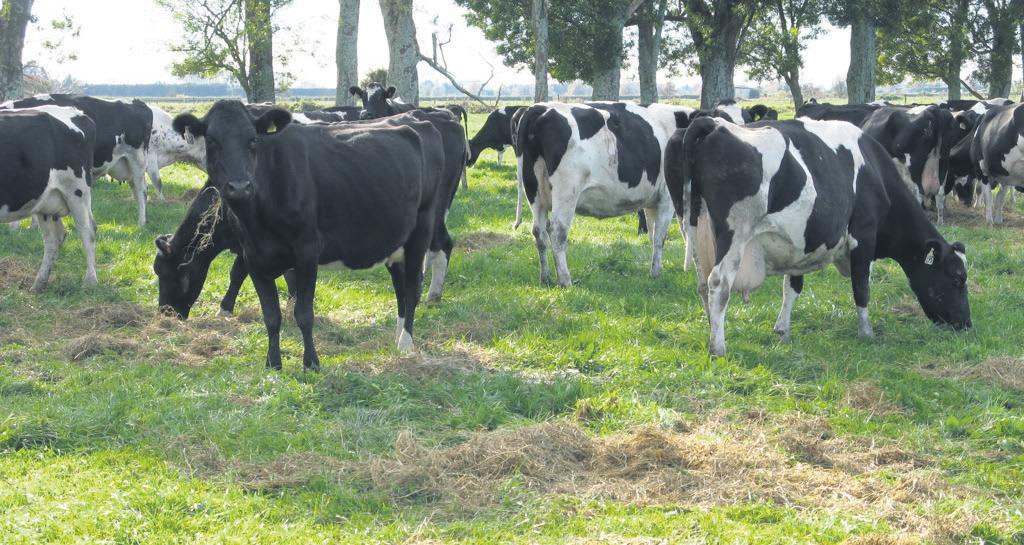
Winter is a critical time as it is during the slow growth period dictated by both soil temperatures and sunshine hours that dung, old root, and litter left on the soil surface are broken down increasing soil organic matter, laying the platform for spring growth.
Spring growth in the deep south is stronger than in the far north where soil temperatures seldom get below 10℃. Regardless, a long interval between grazings during this time is beneficial.
The use of synthetic nitrogen works against this natural process in two ways. Firstly it ‘burns’ soil organic matter reducing both nutrient and moisture holding capacity.
Secondly it stimulates leaf growth during a time when root development is prioritised by the plant, and root mass is an important factor in total growth during the coming season.
An essential concept is that management factors over winter impact on growth in six months’ time, the best operators are well aware of this and manage accordingly.
Encouraging the breakdown of accumulated organic matter is essential as soil always has first draw on energy, with plant demand being secondary.
Functional Fertiliser has two unique products containing selected beneficial fungi and bacteria


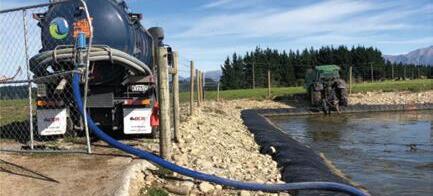



Pasture: The best and quickest way of lifting income and reducing costs is by smartening up pasture management.
formulated to speed the digestion of organic matter and the formation of humus.
DoloZest contains dolomite providing the added benefits of markedly reducing calcium/magnesium related metabolic disorders.
CalciZest contains the same suite of selected beneficial biology and is usually used in spring to encourage clover growth, significantly removing the demand for applied nitrogen during the growing season.
For more information call Peter on 0800 843 809 or 027 495 0041.


CANTERBURY FARMING June 2024 27 DAIRY Golden Bay Dolomite NZ’s most loved magnesium. call 0800 436 566 or visit www.dolomite.co.nz Electrical problems or maintenance? Use our unrivalled industrial electrical service for: • Dairy sheds and irrigation • Power reticulation • Effluent control • Dryers, conveyors and generators • Switchboards and central supplies North Canterbury 03 313 6104 Leeston 03 324 3752 Nairn Electrical, proudly supporting rural Canterbury since 1975. www.nairnelectrical.co.nz 7 day breakdown service
0800 726 724 www.scorch.co.nz Terrestrial Wireless ADSL Fibre VoIP RBI GET CONNECTED WITH Scorch Broadband SCORCH COMMUNICATIONS


LET US FILL IN YOUR
PIVOT RUTS
It’s always about preventative maintenance when dealing with Pivot Ruts.

Ruts Plus pivot rut filling machines penetrate through the grass and soil cutting out the sidewalls of the pivot rut, pulling in sods of the already established grass root structure planting it back into the pivot rut. The farmer then follows behind wheel packing the windrowed material, with their own tractor. Leaving no depressions or bare grass on either side of the wheel track, all without bringing in extra material.
Condensed root structure increases the soils weight holding capacity. Once compacted it then combines together to create a solid mass. The grass continues growing and will no longer hold water the same as it did before. Here is an example: If you drove into a wet fully worked up paddock you






would simply sink up to your axles, yet if you drove into the same wet paddock with established grass you wouldn’t have a problem driving around on it.
Ruts Plus have clearly proven after years of development to have the answer to pivot rut problems by transplanting the already established grass root structure back into the pivot rut. Not only ending up with extra grass but the grass also helps to absorb water. As we all know traditional costs of filling in pivot ruts with foreign material over the years have been skyrocketing. Our system provides immediate results with very little time and expense to the farmer by simply following around the wheel tracks filling in any depressions that could hold water. Ruts Plus are currently operating four machines, each pivot rut filler can typically fill in up to fifty/sixty hectares per day.
Set hourly rate with a one off travel cost of $75 per machine anywhere in Canterbury. Prices usually range from $20 to $35 per hectare depending on conditions.



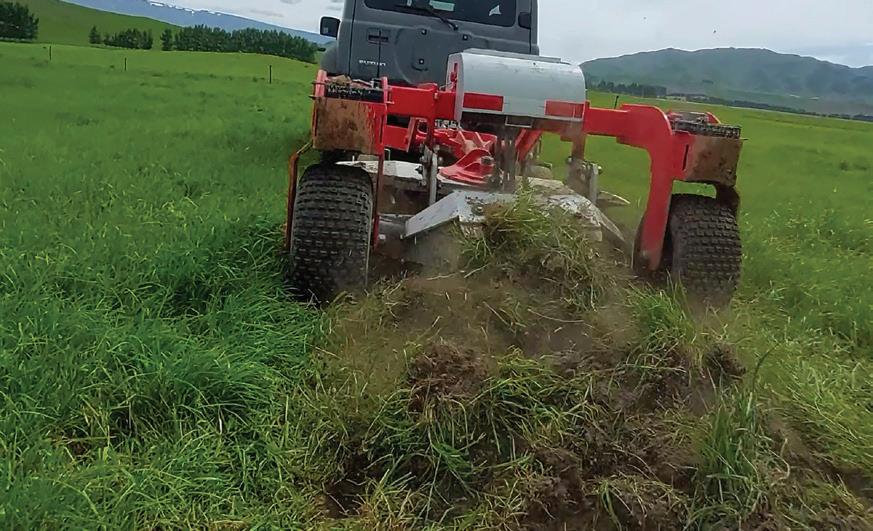
Transplanting the grass root structure back into the pivot rut.




DAIRY LANE UNDER FENCE RETRIEVING





Up to 90% cheaper, quicker and better than traditional methods.
Covering as much as 2km of fenceline per hour, depending on conditions.
Dairy farmers are quickly realising the true value of our system due to the speed, quality of the job & the price.
We have four custom made machines removing material from under dairy lane fences using the most efficient way possible. Our advanced blade system allows it to reach further under the fence wire as well as deflect around the posts by either windrowing the material into the



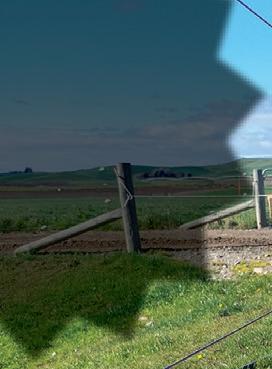

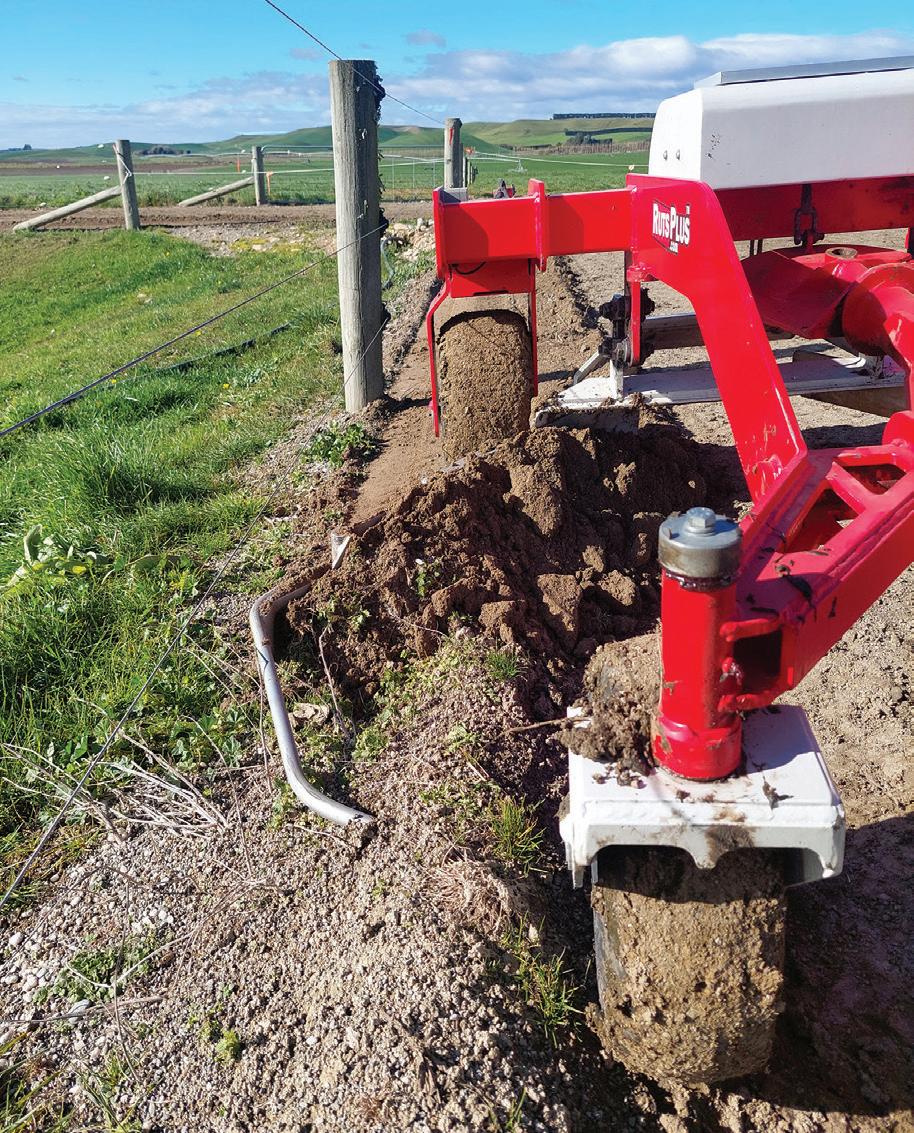




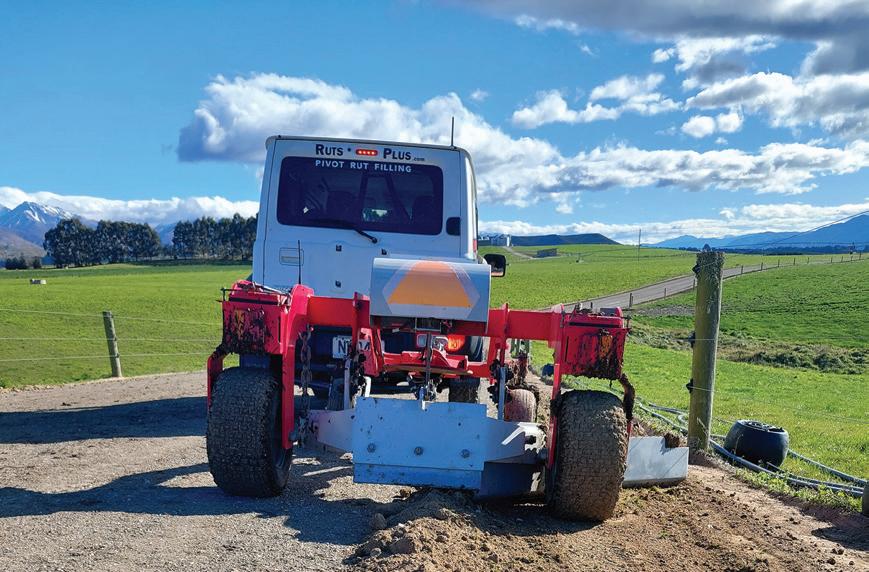

lane ready for the farmer to organise it to be picked up or we simply spread it out. Set hourly rate with a one off travel cost of $75 per machine anywhere in Canterbury.


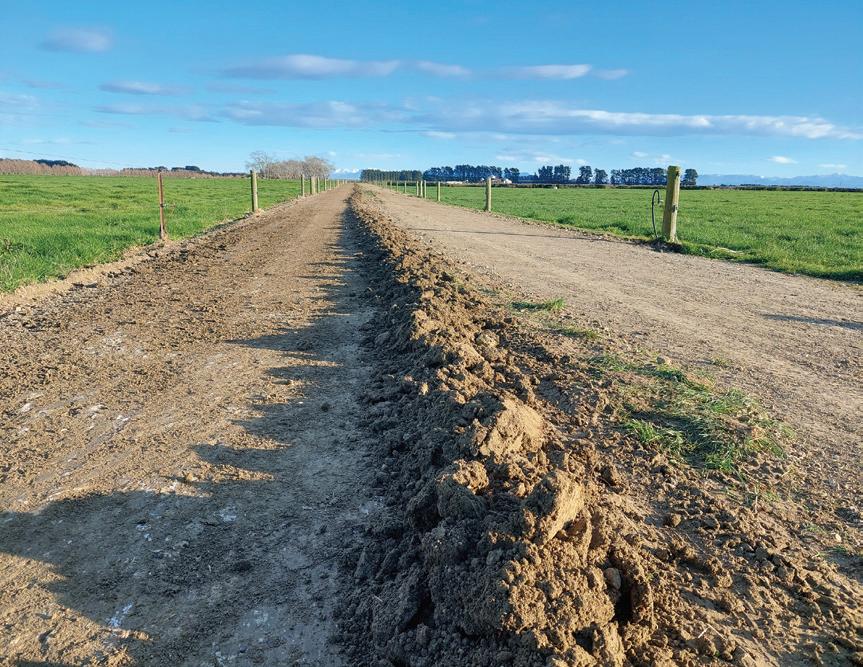





28 June 2024 CANTERBURY FARMING
Pulling in the shoulder
Thinly spreading out the material
Windrowed plus tidied up the lane surface
CANTERBURY WIDE
Before
Compacted by the farmer
DAIRY
Dairy Industry Awards winners share a positive focus
The 2024 New Zealand Dairy Industry Awards winners have a lot in common, including a passion for farming, innovation and positive change.
] Article supplied by DairyNZ DairyNZ chief executive Campbell Parker says the winners are all forward-thinking and contribute strongly to a positive future for New Zealand dairy farming.
“It’s fantastic to see the awards acknowledging top Kiwi dairy farmers and their hard work and dedication at the heart of their communities,” Campbell says.
“These farmers are future proofing their businesses to remain resilient while continuing to produce sustainable and competitive milk.”
The Share Farmers of the Year are Will Hinton and Kali Rangiawha from Manawatu, and the Dairy Manager of the Year is Northland’s Kieran McCahon. Kirwyn Ellis from Waikato is the Dairy Trainee of the Year, and James and Debbie Stewart from Manawatu received the Fonterra Responsible Dairying Award and the John Wilson Memorial Trophy.
As Share Farmers of the Year, Hinton and Rangiawha impressed the judges with the strength of their partnership, and how they apply technical knowledge to be more efficient.
They are closely involved in their community. Will organised a fundraiser when a school bus was needed, and Kali trained as an AI technician when she realised there wasn’t one in their area.
As Dairy Manager of the Year, Kieran McCahon from Northland stood out as an authentic and well-educated farmer, passionate about
adding value to the sector. He took the judges on a journey into practical farming and how he has addressed challenges in his first season.
Kieran was a DairyNZ scholar, achieving his Master’s degree, and previously worked for DairyNZ as a developer before returning to his home in Northland.
Dairy Trainee of the Year Kirwyn Ellis is described as a strong team player and clear communicator, with community at his heart.
Head judge Mark Laurence from DairyNZ says he will represent the sector very well with his new title.
As Fonterra Responsible Dairying Award and John Wilson Memorial Trophy recipients, James and Debbie Stewart were selected for their commitment to people and community, finance, environment, and animal care.
The judges including DairyNZ GM Farm Solutions and Policy Dr David Burger were impressed by the Stewarts’ understanding of the sector’s importance to New Zealand, and the importance of building their own story and brand.
Contract milkers Paul and Sarah Koopal from Central Plateau received the DairyNZ People and Culture merit award and placed third in the Share Farmer category. Judges described them as well-rounded farmers, using all the tools and technology available to them.
Ben Purua was awarded the DairyNZ People and Leadership merit award in the Dairy Manager category.


DairyNZ judge Janine Swansson says Ben is a leader of young people joining the sector, and makes a significant difference to communities and other people’s lives. He promotes dairy farming as a great place to work.
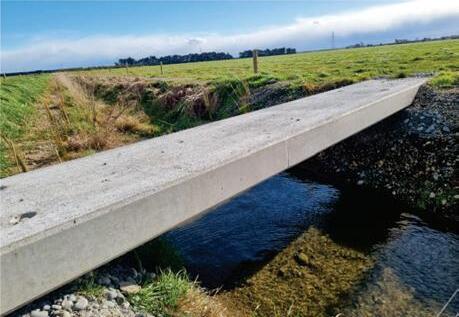







CANTERBURY FARMING June 2024 29 DAIRY Farm Maintenance Done Right We’ve been getting things Done Right for decades by always stepping up to the plate and getting it right the first time, every time. Get in touch today and get the job Done Right. DAIRY LANEWAYS DRAIN CLEANING RUT BUSTING TRACKS & YARDS DRAINAGE & MORE tarbotton.co.nz 03 307 7065 CALL WARREN 0272 502 502 | 03 308 4039 1 Range Street, Ashburton www.ashcon.co.nz LOOKING FOR A FRESH LANEWAY SOLUTION Specialists in constructing and capping dairy lanes. “At the end of the day, it’s about giving the herd the best surface to walk on & reducing the number of lame animals.” We prioritize excellence and ensuring our customers are satisfied, rather than simply focusing on price. RURAL_Laneways_Canterbury-Farming_March-2024.indd 1 22/02/2024 22:15
Isabella Panettiere from Manawatu took out the DairyNZ Practical Skills merit award for her strong practical skills and knowledge. She also placed third in the Dairy Trainee category.
Top team: DairyNZ’s 2024 Share Farmers of the Year were Will Hinton and Kali Rangiawha from Manawatu.
Fonterra announces divestment potential
Dairy giant Fonterra is looking into full or partial divestment options for its global consumer business, as well as its integrated businesses Fonterra Oceania and Fonterra Sri Lanka.
] by Kent Caddick
Chairman Peter McBride said it is a significant move for the Co-op and came after they conducted a strategic review which has “reinforced the role of our core business.”
“This is working alongside farmers to collect a sustainable supply of milk and efficiently manufacture products valued by customers, to deliver strong returns to farmer shareholders and unit holders,” McBride said.
Fonterra CEO Miles Hurrell said the review
has also given the Co-op confidence in the role it plays in the dairy nutrition value chain, with one of its greatest strengths being the production of world-class, innovative ingredients for customers to take to consumers.
“We believe we can grow further value for the Co-op by focusing on being a B2B dairy nutrition provider, working closely with customers through our high-performing Ingredients and foodservice channels,” Hurrell said.





Divestment: Fonterra CEO Miles Hurrell says the Co-op is exploring divestment options for its global consumer business and integrated businesses Fonterra Oceania and Fonterra Sri Lanka.
“This will be enabled by strong relationships with farmers, a flexible manufacturing and supply chain footprint, deeper partnerships with strategic ingredients customers, further investment in our foodservice channel, continued delivery on our sustainability commitments and investment in innovation.
“In this context, we are exploring divestment options for our global consumer business as well as our integrated businesses Fonterra Oceania and Fonterra Sri Lanka.”
Fonterra Oceania is a fully integrated business, recently created through merging Fonterra Brands New Zealand and Fonterra Australia. It comprises consumer, foodservice and ingredients businesses. Fonterra Sri Lanka comprises consumer and foodservice businesses.
Collectively, the businesses in scope for potential divestment utilised approximately 15% of the Co-op’s total milk solids and represented approximately 19% of Fonterra’s group operating earnings in the first half of FY24.
“A divestment of these assets would help create a simpler, higher performing Co-op with our focus on our core ingredients and
foodservice business and doing what we do best,” Hurrell said.
“While these are great businesses with recent strengthening in performance and potential for more, ownership of these businesses is not required to fulfil Fonterra’s core function of collecting, processing and selling milk.
“Due to our co-operative structure, we believe prioritising our ingredients and foodservice channels and releasing capital in our consumer and associated businesses would generate more value.
“At the same time, we believe Fonterra is not the highest-value owner of the Consumer and associated businesses in the longer term and a divestment could allow a new owner with the right expertise and resources to unlock their full potential.”
Hurrell said as a next step, Fonterra will appoint advisors to assist with assessing divestment options.
“We recognise a divestment of this scale would be significant for Fonterra. Throughout this process we will be considering how best to maximise overall returns to our farmer shareholders and unit holders.
“Any decisions about use of net proceeds from a sale will be guided by our Resource Allocation Framework, which allocates funds to debt repayment, investment to support our strategy and distributions to shareholders and unit holders.
“We expect a divestment process to take at least 12 to 18 months. If we were to proceed with a divestment of this size we would seek shareholder support.”
Information for this article was supplied by Fonterra Co-operative Group. For more information go to: www. fonterra.com




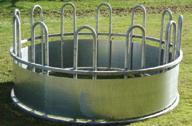








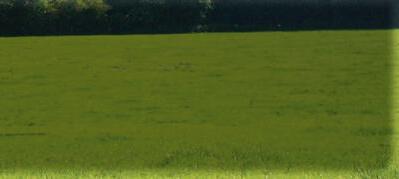













30 June 2024 CANTERBURY FARMING DAIRY FRANCHISE OPPORTUNITY! Are you ready to join the leader in calf disbudding and foetal ageing in cattle pregnancy? Trusted Reputation and Proven Business Model Exclusive Territory and Comprehensive Training Innovative Technology and Supportive Network W Whhy y cho se U t -Scan? Make $100k in only 3months plus HUGE future potential for growth! Ultra-Scan.co.nz 0508 858 727 0800 4 PALMERS - 0800 472 563 - 34 Robinson St, Riverside Industrial Estate, Ashburton Be quick! Get your order in! Benefi ts of our feeders • Various sizes and types available • Safe feeding while eliminating as much wasted hay as possible • Longevity of the feeder maximised • Competitive prices • Deer and sheep feeders also available Quality hay feeders from Palmer Agri Parts Direct are what they need. Square Feeders Round Feeders Hay Feeders Cradle Feeders Double square feeders






Will regulatory changes help farmers?
The coalition Government are changing the Resource Management Act and some of the key documents which govern how we manage our water resources.
] with Matt Bubb ] Aqualinc
Since announcing the changes, and what they still intend to change, there have been many discussions with farmers about how this might help farming communities. Optimism is high that these changes will make a real difference.
This is understandable because the Government made it clear that they wanted to remove unnecessary red tape and bureaucracy.
They also wanted to reduce the number of consents required, whilst making the consenting process less complicated, time consuming and expensive. If this happens, it should not only help applicants, but it should also help Councils by reducing their workloads.
So, have we seen notable changes yet? The answer to this is – no.
Although the intent to change things has been signalled by Government, Councils still have to assess consent applications against operative regional plans and national regulatory documents. As such, they can’t change much until we see formal changes to the existing rules framework.
What is encouraging for many farmers is that cabinet has agreed to winter grazing and
stock exclusion regulation changes to a more risk-based, catchment-focused approach. This is great news because it should mean that we can use our Farm Environment Plans (FEP), or Freshwater Farm Plans (FWFP) and associated audit process, to show good management practices, rather than by gaining a consent.
These plans, that most farmers have in place already, require good management practice and so the requirement to gain a consent served little material purpose. The FEP/FWFP and audit process is more likely to result in better on-farm practice, and therefore better environmental outcomes, than securing a consent might achieve anyway.
Another encouraging aspect of the changes that have been signalled, is the intent to review and replace the National Policy Statement for Freshwater Management 2020 (NPS-FM).
This change should be supported by anyone who uses water, including urban communities. One reason for replacing this document is to address concerns about how the hierarchy of obligations contained in the Te Mana o te Wai provisions are being applied to resource consent applications.
The hierarchy means the health and wellbeing of waterways is foremost, the health needs of people are prioritised second, and

the social, economic, and cultural wellbeing are prioritised third.
Under the NPS-FM, applications for consents are supposed to show how their proposal puts the health and wellbeing of the water body first. This relates to all waterbodies, including groundwater. This is an exceedingly tricky thing to achieve in many situations.
Changes afoot: Under the National Policy Statement for Freshwater Management, applications for consents are supposed to show how their proposal puts the health and wellbeing of the water body, including groundwater, first.
For example, if a Council applies for consent to take groundwater to serve an urban community, how will that benefit the groundwater system? This will take water from the groundwater system and, depending on how the urban wastewater is dealt with, this may also then pose a contaminant risk to the groundwater system.
How can this be putting the groundwater system first? It can’t, and therein lies one of the problems with the current hierarchy of obligations.
The NPS-FM, in its current form, makes the process of making an application difficult. It also puts Councils in a difficult position because they know that in some circumstances it will be impossible to give effect to Te Mana o te Wai.
Hopefully, the changes that will be made to the NPS-FM will provide more certainty for applicants, will enable Councils and decision makers to make informed and balanced decisions, whilst also ensuring that our precious freshwater resources are appropriately protected.








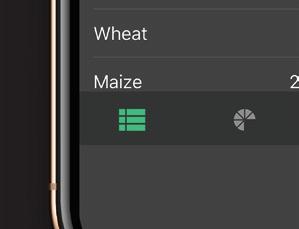




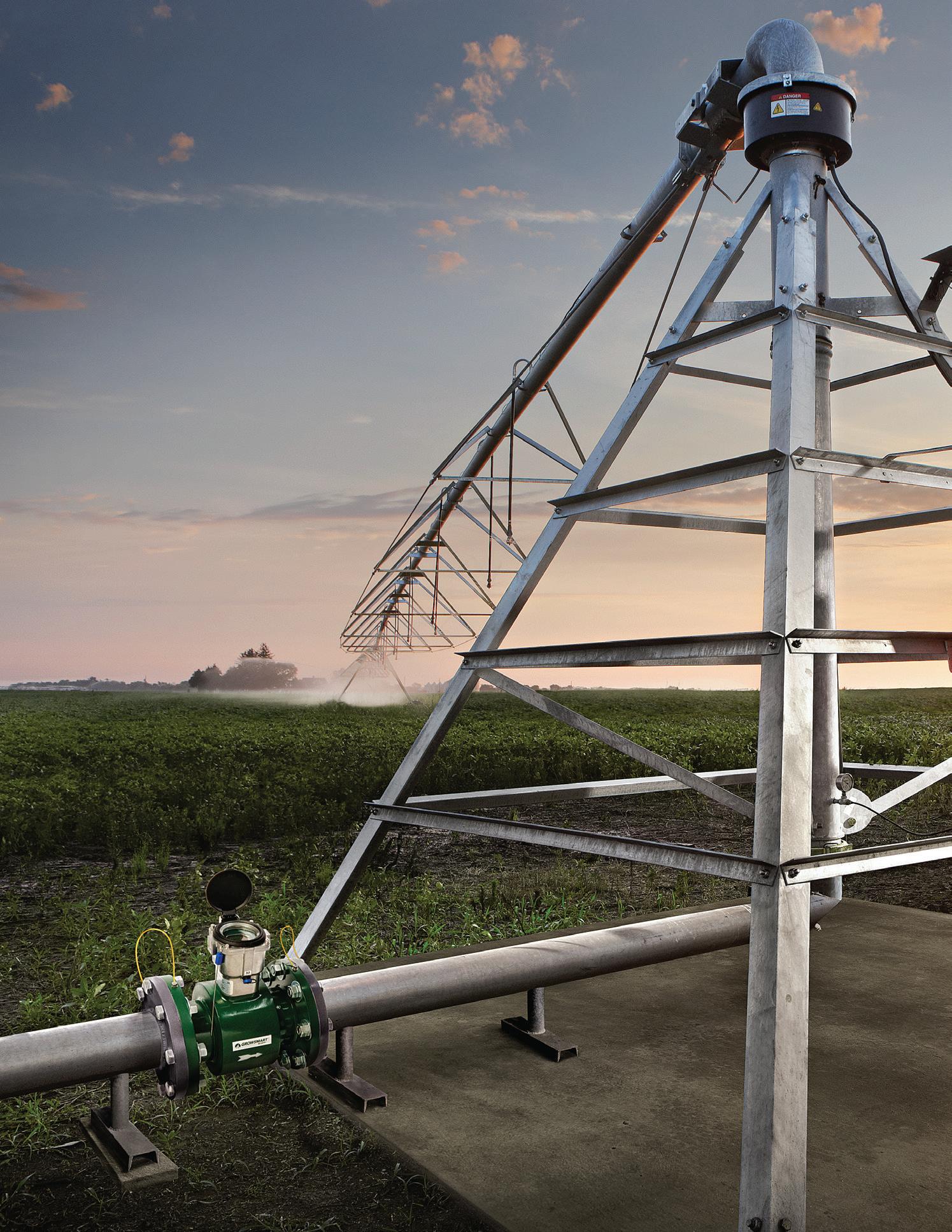


CANTERBURY FARMING June 2024 31 DAIRY WATER & IRRIGATION 16HMDG1610047-OPTION3 irrigation wells potable water supplies ground source heating geotechnical assessment www.drilling.co.nz MC Drilling Ph 03 324 2571, 120 High St, Southbridge, Canterbury IRRIGATE WITH CONFIDENCE. IRRIGATION SYSTEMS REMOTE MANAGEMENT PRECISION VRI
LINDSAY
BY
A checklist for winter maintenance
As the season changes to colder mornings and wetter days our farm routines need to take the opportunity to look at what’s on the agenda for winterisation of irrigation systems.

 ] by Stephen Mcnally
] IrrigationNZ
] by Stephen Mcnally
] IrrigationNZ
]
Principal Technical Advisor
It’s a great time to undertake the check-ups to ensure any repairs and maintenance can be achieved, as well as thinking about protection against the extremes of the coming season.
If you’ve been noting down damage or signs of wearing parts on your to do list, it would be good to get on to any repairs soon so that supply chains that may be stretched, don’t mean you run out of time before Spring rolls around again.
Get your pumps, filters and valves checked for function and leaks, making sure you follow the processes set down by your equipment supplier.
Before you start have a good read of the Practical Resources in the IrrigationNZ web page where we set out some sound advice on maintenance points (ensure you follow any safety recommendations), and if you are tempted to work around electrical equipment – you probably shouldn’t.
For anything that you are not sure of I really do recommend you get a service visit booked in by your accredited service provider.
As the winter storms sweep across the land make sure any equipment that is vulnerable to wind damage is parked up appropriately or anchored down to avoid costly roll overs.
Make sure you and your staff think about any changes you are making to layouts or where other farm equipment is parked or stored so you keep wheel tracks clear for when you want to get under way again.
While all that on the ground activity is occurring be reassured the team at IrrigationNZ is working hard to navigate the complexities of the ever shifting and expanding policy environment.
We are directly involved in representing irrigated farming issues in many government agency forums that are redefining the way in which New Zealand looks to manage the value, benefits, and obligations of use of freshwater, nutrients, and water infrastructure.
We provide pragmatic representation on many government led working groups such as the roll out of the dam safety regulations where we are looking to ensure low risk dams and those under the size thresholds are appropriately handled, whilst also recognizing the need for community certainty when these structures are larger needing suitably qualified design and assessment.
There is an overlap with some irrigators on small rural drinking water suppliers and irrigation storage schemes; our work with the Taumata Arowai is looking to get pragmatic acceptable solutions for treatment implemented supported by our technical knowledge input.




Looking down the track to new water storage scheme developments we are closely involved with MPI on framing up strategic solutions for New Zealand’s water availability and security to underline the role of capture and storage infrastructure in economic resilience. Our views are called on and respected in these forums.
Reminder: ensure you carry out winter maintenance on your irrigation systems so they are ready for next season.
IrrigationNZ is delivering more training in both face to face and online formats as part of an overall career development pathway. This includes irrigation engineering covering design, installation, and operations; we are looking at how innovative methods can be used to keep training and upskilling available across the irrigation sector.



32 June 2024 CANTERBURY FARMING WATER & IRRIGATION
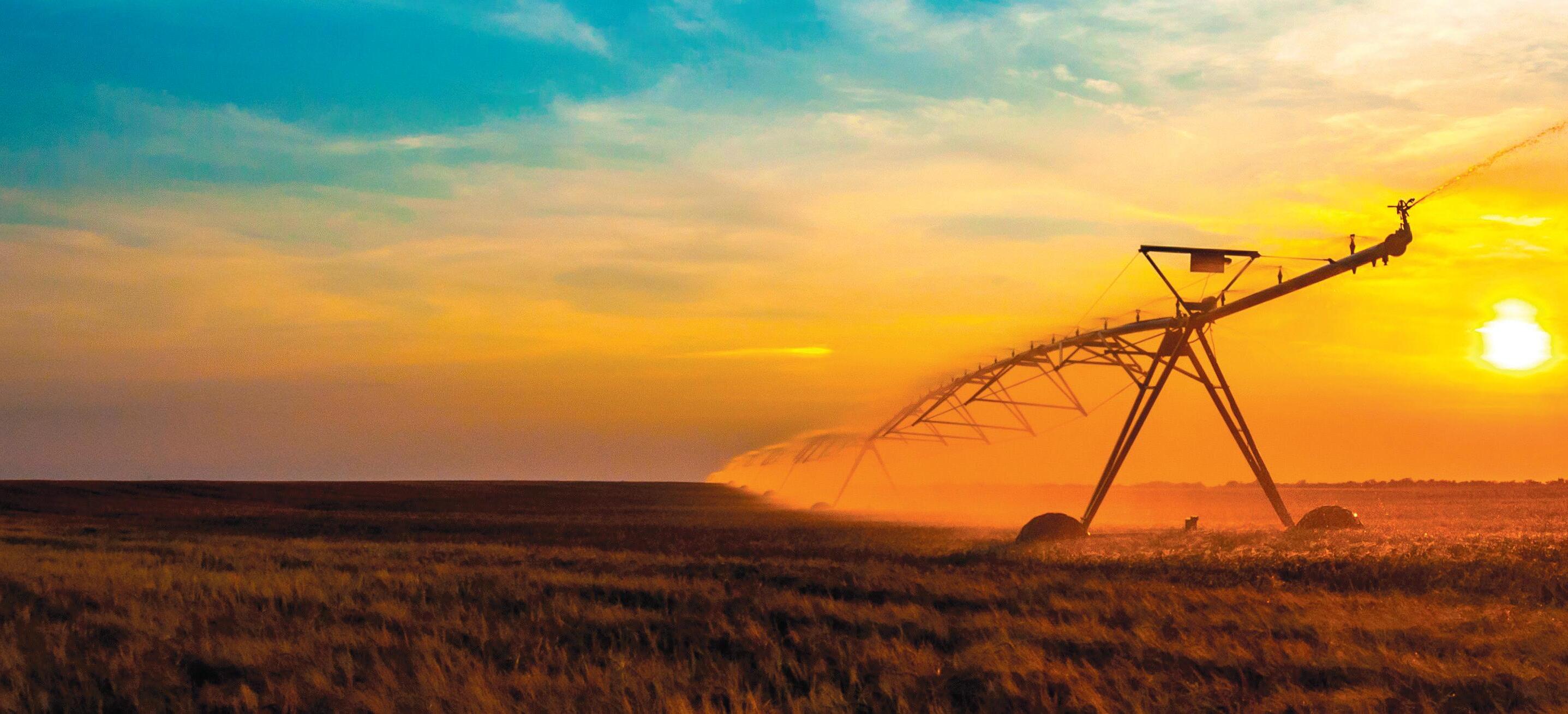
Are you tired of dealing with high track maintenance costs on your dairy farm?
With our innovative exclusion irrigation control system, you can cut track damage by over 50% while enjoying a range of benefits:
10 Benefits of fitting Onfarm Data Irrigation Exclusion control to your pivots
PRECISION WATER MANAGEMENT
Our system allows you to control individual nozzles, effectively managing water exclusion areas and eliminating unnecessary water wastage and track damage.
TARGETED IRRIGATION
Customize exclusion control to specific spans of your pivot, ensuring cost-effectiveness and affordability.
COST EFFECTIVE SOLUTION
Invest in track preservation without breaking the bank! Our system is highly cost-effective, with prices starting at approximately $100 - $125 per meter for 5 spans.
WATER CONSERVATION
Apply water only where it’s needed, conserving precious resources and benefiting both your farm and the environment.
IMPROVED STOCK MOVEMENTS
Keep your stock moving smoothly without interrupting the irrigator, optimizing farm operations.
PREVENT GATEWAY ISSUES
Stop water from creating boggy conditions in gateways, ensuring safe and accessible pathways for your livestock.
ENHANCED FARM SAFETY
Dry tracks improve safety on your farm, reducing the risk of accidents and injuries for both humans and animals.
CONTAMINATION REDUCTION
Minimize the transfer of solids into the dairy shed and washdown system, maintaining clean and efficient facilities.
RETROFIT COMPATIBILITY
Our system can be retrofitted to all pivots, making it easy to upgrade your existing irrigation setup.
SUBSTANTIAL WATER SAVINGS
Our system can reduce irrigated area, resulting in significant water volume savings.
Don’t let track maintenance costs drain your resources. Experience the firsthand difference of Onfarm Data’s Exclusion Irrigation Control System.
CONTACT US TODAY to learn more and start saving!
FOR A QUOTE CONTACT
CANTERBURY FARMING June 2024 33 WATER & IRRIGATION ANDREW 022 183 2018 andrew@onfarmdata.com LYALL 021 223 8666 lyall@onfarmdata.com
Reduce track maintenance costs with Onfarm Data’s Exclusion Irrigation Control System!
Visit www.onfarmdata.com and www.aquaflex.co.nz to learn more



Aquaflex offers a cost-effective, reliable, and accurate soil monitoring solution that stands out for several reasons:
Solar Powered
Aquaflex sensors are solar-powered, with battery backup, eliminating the need for batteries to be recharged or replaced. This ensures continuous operation and reduces maintenance requirements, saving farmers time and resources.
No Ground-Level Installation
Aquaflex sensors are uniquely designed with no egress or connection to the ground level above the soil sensor tape. This crucial feature ensures that water cannot create preferential pathways, providing you with accurate soil moisture readings.
Accurate Readings in all Conditions
Our innovative design eliminates the common issue of soil “shrinking back” in heavy soils when they dry out, which often exposes monitoring devices and skews data.
Proven Track Record
With over 25 years of proven performance in the field, Aquaflex has established itself as a trusted and dependable soil monitoring solution. Farmers can rely on its long-standing reputation for accuracy and durability.
Representative Soil Measurement
Installed directly in the paddock, Aquaflex sensors provide truly representative soil measurements. However, some probes may have their tops exposed and are installed under or behind fence lines, where soil conditions may differ considerably from the irrigated paddock.
Temperature Reading
Aquaflex sensors provide temperature readings at a depth of 100 mm, offering valuable insights into soil conditions. However, some probes may require users to adjust the installation depth to get this reading, potentially exposing the top of the device to damage from stock and machinery.
Versatile Installation
Aquaflex sensors can be self-installed and removed as required, offering farmers flexibility and convenience.
In summary, Aquaflex stands out as a reliable and cost-effective soil monitoring solution due to its solar-powered operation, proven track record, ground-level installation, temperature reading capabilities, versatility in installation, and ease of self-installation and removal. Farmers can trust Aquaflex to provide accurate soil moisture data, enabling them to make informed decisions and optimize their farming operations for improved productivity and sustainability.
34 June 2024 CANTERBURY FARMING WATER & IRRIGATION Visit www.aquaflex.co.nz to learn more
ANDREW - P 022 183 2018 | E andrew@onfarmdata.com LYALL - P 021 223 8666 | E lyall@onfarmdata.com




] with Ali Spencer

The future is firmly in focus
More than 100 deer farmers visited the Gaddum family’s Rangimoe Station in Kereru, Hawke’s Bay, last month as part of the deer industry’s annual conference. This was an exemplary example of the conference theme: ‘Incredible legacy – the past, the present and the future’.
Ben Gaddum welcomed the visitors into the field day, wonderfully hosted by the New Zealand Deer Farmers Association Hawke’s Bay branch. He explained the family’s legacy of over eight decades at Kereru on an unexpectedly cold and blustery day for Hawke’s Bay.
Then Ru and Kate Gaddum, the fifth generation of the family to farm Rangimoe, led a convoy of 4x4s around the farm and its impressive deer unit, explaining the present and future for the property.
Around 2,406 deer are run over 456 effective hectares at Rangimoe, producing mainly for venison but with an expanding velvetting herd, alongside 1,095 sheep and 407 cattle. The Gaddums have also recently introduced five Wapiti stags, which have been mated over 210 venison-type hinds.
The family is also working with Mauri Oho, the Northern Ruahine Biodiversity Recovery Project, on pest trapping and riparian replanting of native plants on the property. To date, 34,000 plants have gone in over the past three years, along with eight kilometres of fencing.
With farmgate returns relatively stable, comparative to other sectors, there was a positive buzz around conference, which took place the day before, on Wednesday 8 May in Napier’s War Memorial Centre.
Over 170 (more than expected) attended to listen and learn from the dozen or so speakers, take part in three of four workshops, and attend the highlight of the conference – the annual deer industry awards dinner.
Key themes that flowed throughout the conference were ‘grit’ – the passion of those in the industry and their perseverance for long-term goals.
This passion and perseverance have combined to help the deer industry get to where it is today and will help its products along future value chains.
A prevailing sentiment was the importance of having both venison and velvet segments thriving for a sustainable deer industry. The future is firmly in focus for the sector.
DINZ executive chair Mandy Bell opened the conference to give the ‘State of the Industry’ address, noting the strategy development that had taken place to look out over

the next five years. Restructuring of DINZ had made the organisation fit for the future.
New chair of the NZDFA’s executive committee, Mangaweka deer farmer Mark McCoard, who has taken over from Justin Stevens, gave delegates an update on the association’s activities.
Keynote speaker, industry veteran Murray Matuschka, who had been honoured with Life Membership of the NZDFA at the association’s annual meeting before conference, proved to be the star turn, providing an hilarious closing to official proceedings as he recalled his past experiences in the industry.
The biggest award of the night, the 2024 Deer Industry Award, went to deer vet and Massey University academic Professor Peter Wilson, and was presented with his award by
deer farmer Steve Borland and Deer Industry News editor Lynda Gray, who were two of the judges.
This year’s NZDFA Matuschka Award for a grassroots “unsung contributor” at branch level went to Helen Clarke of the NZDFA’s Waipa branch and was presented by Murray Matushka.
The final award presented at the dinner was the MSD/Allflex Deer Industry Photography Award, which was won by Kirsten Roe for ‘Dunstan Creek Stags’. The new Wapiti Elk category this year was won by Tony Pidgeon for a ‘sunset bull’.
The 2025 Deer Industry Conference, celebrating the industry’s 50th anniversary, will take place in Queenstown on May 13 next year.



Walking the walk: Winner of the 2024 Deer Industry Photography Award was Kirsten Rose for ‘Dunstan Creek Stags’.




















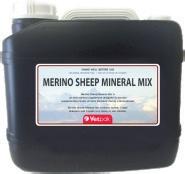


CANTERBURY FARMING June 2024 35 LIVESTOCK P. (07) 870 2024 HEALTHY LAMB RTU HEALTHY EWE RTU YOUR “GO TO” SHEEP MINERAL COMPANY www.vetpak.co.nz 24/7 SMARTRACE Adult Sheep Boluses Registered product ACVM No A11545 MERINO SHEEP MINERAL MIX
Talking the talk: Ru (speaking) and Kate Gaddum (to his right) are the fifth generation of the family to farm at Rangimoe.
Renewing focus behind the gate
Many of us will be transitioning stock onto winter forage crops and settling into the winter routine of shifting breaks and feeding out.

 ] by Nicky Hyslop
] by Nicky Hyslop
] Beef + Lamb New Zealand
Director
] Central South Island
I know there are farmers in parts of our region who have been feeding out for months due to the on-going dry conditions and looking around the countryside, I would like to commend farmers on maintaining stock in such great condition despite the challenges this season.
Farmers are fantastic at getting on and doing what they do best: looking after their livestock, their natural resources and growing grass, crops and forages.
While farming has become an increasingly complex business, it does come down to these fundamentals and there is some comfort to be drawn from physically farming and achieving something tangible every day, even if it is just moving a break fence or repairing a water leak.
Economically, it is an incredibly tough season. Farming is cyclical and I have every con-
‘





fidence in the future of our industry. We just need to get through this. Remember we are all in this together and there is support out there (e.g. The Rural Support Trust) for anyone needing a helping hand.
Beef + Lamb New Zealand is renewing its focus on productive and profitable farming businesses.
The organisation is committed to giving farmers the tools and resources they need to address issues such as drench resistance, Facial Eczema (it’s expected to track south), environmental management and sector capability.
There are a number of extension activities being run throughout the region which give farmers the opportunity to get off-farm, network and learn new skills. Just jump on the
B+LNZ website and look under the Events section.
While the focus is behind the farm gate, B+LNZ will continue to advocate on behalf of its levy payers at all levels of government. The organisation is telling our farmers’ story – and we have a great story to tell.
Part of that story is the role rural cooperatives have played in our history and, I believe, in our future. They have both strengths and weaknesses, but when working well, they offer so much.
They give individual farmers scale and the bargaining power of the collective. This means there is a degree of price control over fundamental farm inputs such as fertiliser. Cooperatives also enable high performance business teams to operate in volatile

While the focus is behind the farm gate, B+LnZ will continue to advocate on behalf of its levy payers at all levels of government.
international markets, but with that comes the requirement to look at reinvestment for future business resilience and capability. Like any business, cooperatives are challenged by volatile markets so they must be agile and continually scanning for opportunities and threats.
Farmers are always adapting to meet the needs of the markets. Considering the role of cooperatives in New Zealand agriculture and what models would best serve us in the future is just one of the conversations our sector is having.



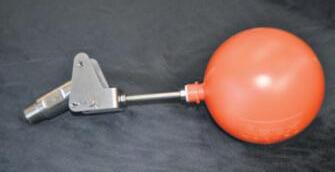

36 June 2024 CANTERBURY FARMING LIVESTOCK • Driveways • Earthquake Repairs • New Home Specialists • Patios & Paths




The emergence of the EV
Tuatara is a New Zealand company that has been operating for approximately 12 years. Its emergence came about after it became clear that there was a desperate need for an off-road vehicle that was not a four-wheel motor bike that was predominantly plastic.
Article supplied
] by Tuatara Machinery
With this realisation came the purpose built, all steel, Tuatara side-by-side equipped with a 1000cc petrol powered, car engine for greater reliability and torque and a five-speed manual transmission, providing genuine engine braking and with no expensive CVT drive belts to slip or break.
The Tuatara 1000 EFI has a go-anywhere capability that will outperform its competition and is designed to carry and tow.
It’s 1100kg, unladen weight is a testament to the thickness of the steel construction and its robustness.
This vehicle is designed with engineering simplicity in mind which means that you don’t have to pull it to pieces to work on it and even those with a limited mechanical background can do most of the maintenance.
However, the biggest innovation at Tuatara in recent time has been the introduction of the fully electric Tuatara model.
Initial concerns about how this model would be embraced by farmers were soon put to bed once it became apparent that farmers are just as concerned about the welfare of the planet as anyone.
Since the introduction of the eTuatara, the uptake surpassed that of the petrol model by a ratio of 7-to-3. But Tuatara are sure that the high level of interest in the eTuatara is not just the zero


emissions but also due to the significantly reduced servicing requirements, which along with the approximate 3 cents per kilometre electricity cost, equates to very cheap running.
So, who wouldn’t seriously consider the electric option?
Tuatara is strongly of the view that EVs are a very good option for farming and there will soon be a day when electric vehicles in farming will be the norm, rather than the exception.
This is due to the rise and rise of small electric vehicles which are displacing the demand for small combustion engines.
Consequently, small engine manufactures are withdrawing from the industry because of a genuine fear that they don’t have a future.
Tuatara Machinery has seen this themselves and are now using their third petrol engine after the previous engines were withdrawn from the production line.





CANTERBURY FARMING June 2024 37
]
Electrified: Since the introduction of the eTuatara, the uptake has surpassed that of the petrol model by a ratio of 7 to 3.


38 June 2024 CANTERBURY FARMING RURAL WHEELS ACTION POWER SPORTS 10 GEORGE NOBLE RD, YALDHURST, CHRISTCHURCH. PH: 03 943 5391 CANAM NORTH CANTERBURY 303 FLAXTON ROAD, RANGIORA. PH: 03 313 5977 EAST COAST POWERSPORTS 724 EAST ST, NETHERBY, ASHBURTON. PH: 03 307 4846 EAST COAST POWERSPORTS 127 HILTON HIGHWAY, WASHDYKE, TIMARU. PH: 03 688 7517














CANTERBURY FARMING June 2024 39 T&Cs: Advertised savings of $1,751 off MRP (including GST) applies to new LT-F400F/LT-A400F purchased between 01/05/24 and 31/07/24. At participating Suzuki dealers while stock lasts. Price excludes GST. Excludes demo units and all other promotions. SAVE $1,751 NOW $11,999 +GST You’ve tightened your belt, so we’ve sharpened our pencil. Pay less up front, enjoy an extended 3-year warranty and low total cost of ownership. Talk to your local Suzuki dealer or visit suzuki.co.nz KINGQUAD 400 MANUAL / AUTO TRT23091_400s_CF RURAL WHEELS
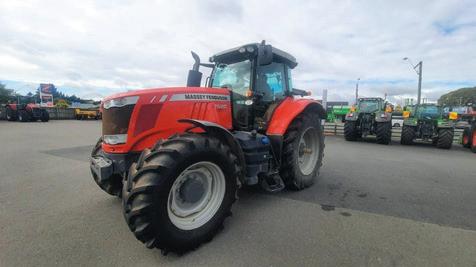

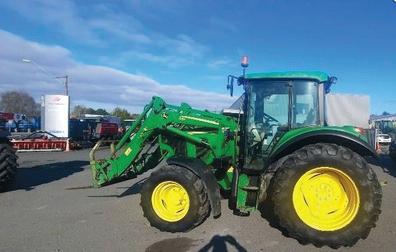




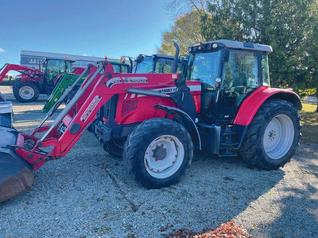





40 June 2024 CANTERBURY FARMING SALE INCOMING! SALE INCOMING! COME IN AND SEE US ABOUT ALL OUR STOCK , FINANCE AND FREIGHT OPTIONS *Prices exclude Gst and freight, available while stocks last Other stock to include: JD 6125R Claas 530 Fendt 828 Deutz M620 Fendt 818 JD 6330 JD 6195R JD 6534 MF 5445 Valtra T214 Fendt 720 Claas 640 JD 6220 MF 5465 Claas 620 NH T6030 Valtra M120 MF 7619 MF 5465 JD 6534 MF 7718 NH T7 235 NH T7 540 Fendt 930 MF 7619 Fendt 936 Fendt 716 Fendt 714 Fendt 824 MF 7715 Fendt 720 Fendt 824 Fendt 720 Fendt 924 Fendt 718 Valtra N113 Fendt 724 Fendt 718 MF 6465 Case Puma 155 Fendt 930 MF 8650 Massey Ferguson 7620 WAS $90,000 NOW $88,000 200 hp, 6506 hrs, 50kph, dyna VT, auto guide ready, front suspension Efficient spec, 4 remotes Christchurch M29317 Claas 620C WAS $31,000 NOW $29,000 2011 yr, 135 hp, 5595 hrs, 2 rear remotes Christchurch M30238 John Deere 6220 SE WAS $48,000 NOW $44,990 2006 yr, 90 hp, 6221 hrs, 16/16 trans, JD 633 loader C/W bale forks Christchurch M29791 Massey Ferguson 6455 WAS $42,000 NOW $38,990 2005 yr, 6804 hrs, 100 hp Dynashift trans, Tier 2 Stoll robust loader Christchurch M29324 John Deere 6330 NOW $55,000 Massey Ferguson 7618 NOW $88,000 Fendt 818 NOW $55,000 Massey Ferguson 5465 NOW $50,000 2012 yr, 6700 hrs, 105 hp JD 653 loader, great rubber superb condition Timaru M30368 180 hp, 6565 hrs, 50 kph, GPS front suspension, front linkage & pto priced to sell! Timaru M30048 180 hp, 11,580 hrs, 4 rear remotes, power beyond , TMS, front weights hyd trailer brakes Timaru M30112 2013 yr, 6474 hrs, 130 hp stoll FZ 45.1 loader, Cab suspension dromone hitch Timaru M30147 Massey Ferguson 7619 NOW $115,000 2013 yr, 3800 hrs, 190 hp dyna 6 trans, cab suspension full set of front weights, great condition Ashburton M30146 Massey Ferguson 5465 NOW $47,995 2013 yr, 120 hp, 7000 hrs, tier 3 sisu dyna 4 trans, dromone hitch electrically controlled loader Ashburton M30196 New Holland T7.200 NOW $69,500 2003 yr, 200Max hp, 6562 hrs 3 factory spools, 19 speed powershift, MX loader C/W hydraulic locking pin hydraulic trailer brakes Ashburton M28592 Welger RP160 V WAS $29,995 NOW $27,500 2017 yr, 45,600 bales, 13 knives E-Link controller, camless pick up winter special price!! Ashburton M29912




















































































































































































 ] with Bessie Paterson LLB
] Ronald W Angland & Son
] with Bessie Paterson LLB
] Ronald W Angland & Son


















































































































































































 ] by Solis norton
] by Solis norton






























































































































































 ] by Stephen Mcnally
] IrrigationNZ
] by Stephen Mcnally
] IrrigationNZ











































 ] by Nicky Hyslop
] by Nicky Hyslop













































